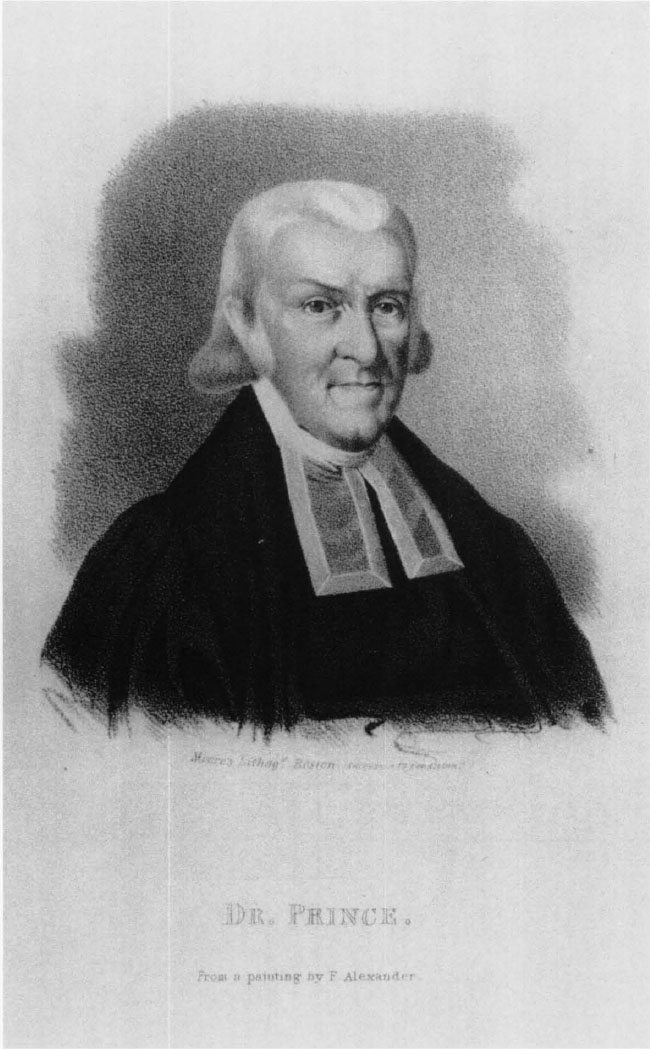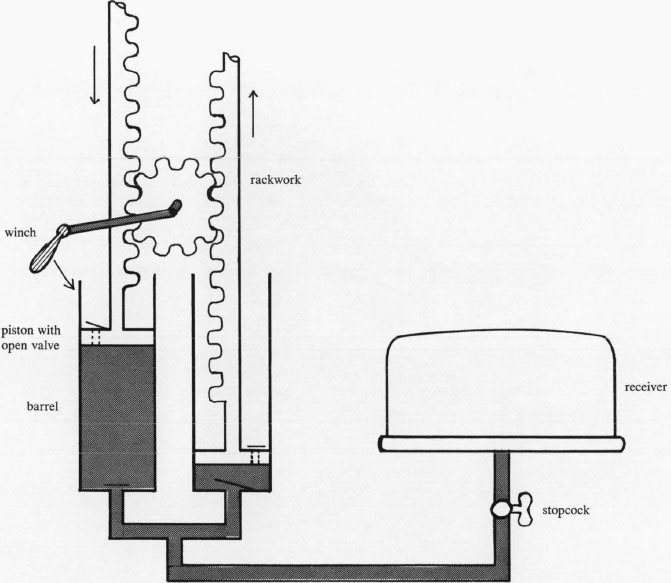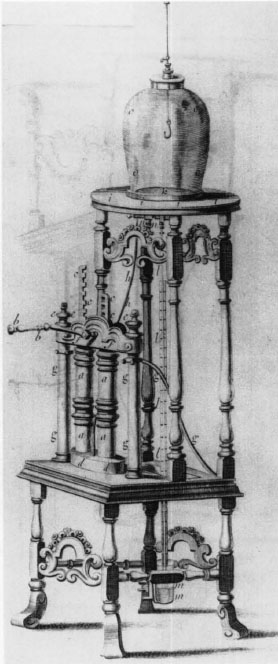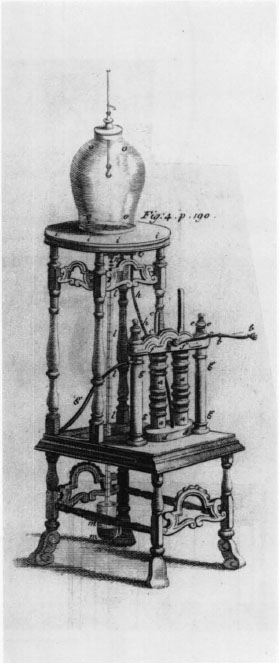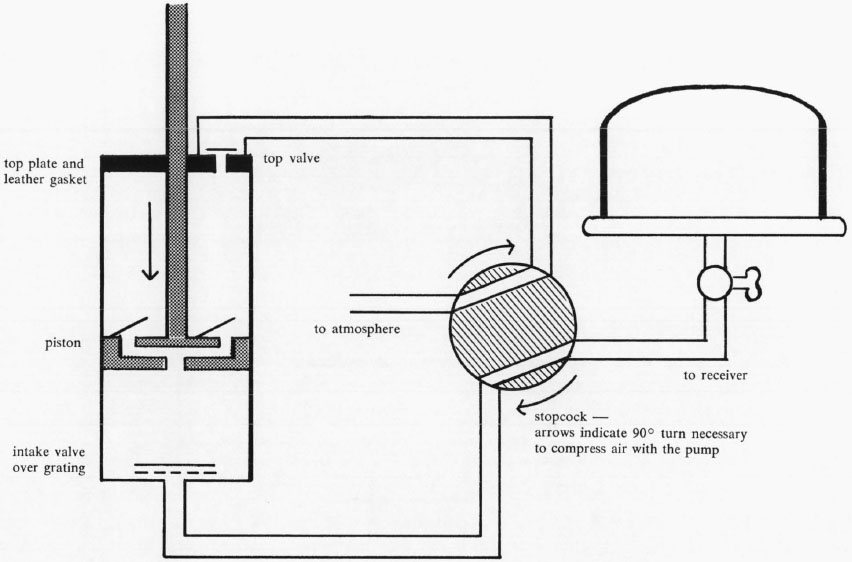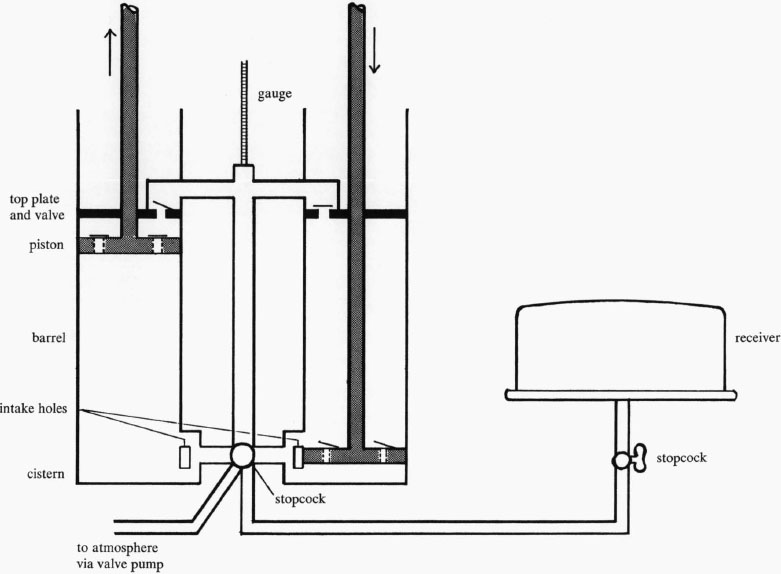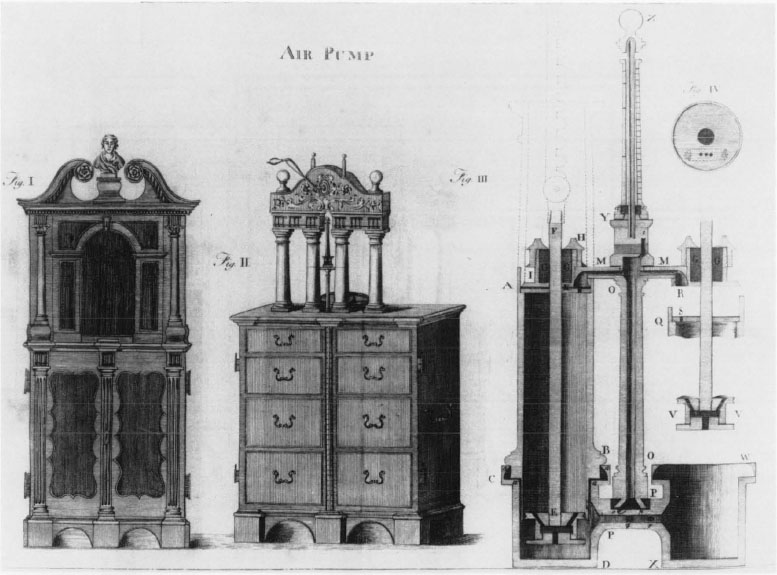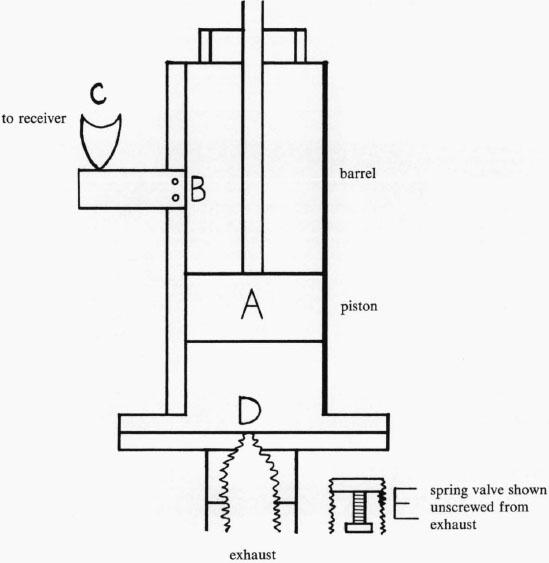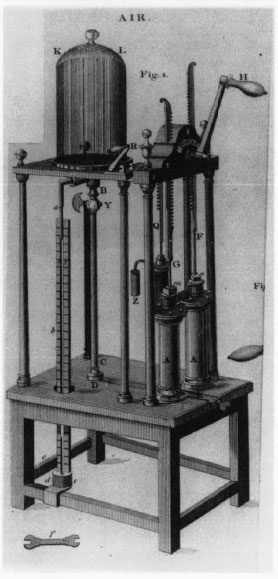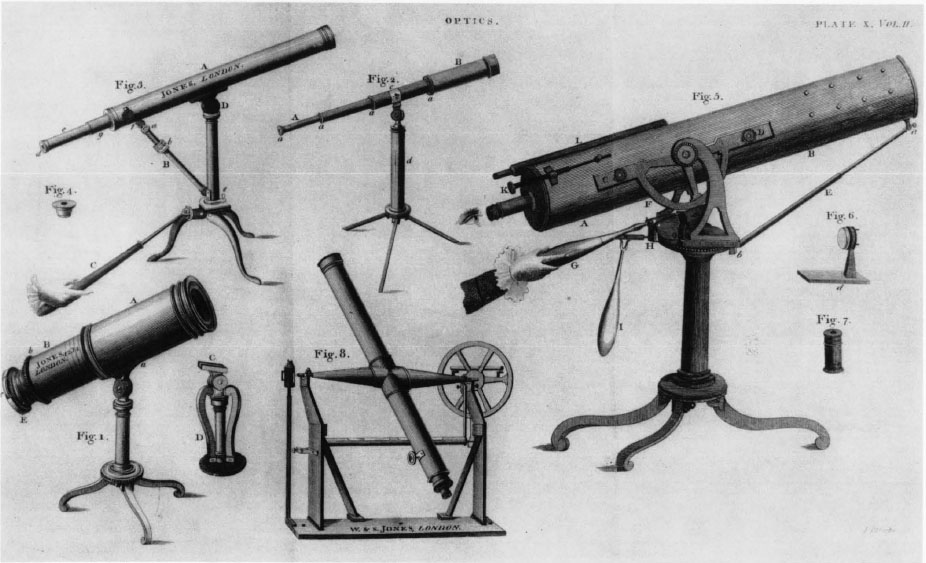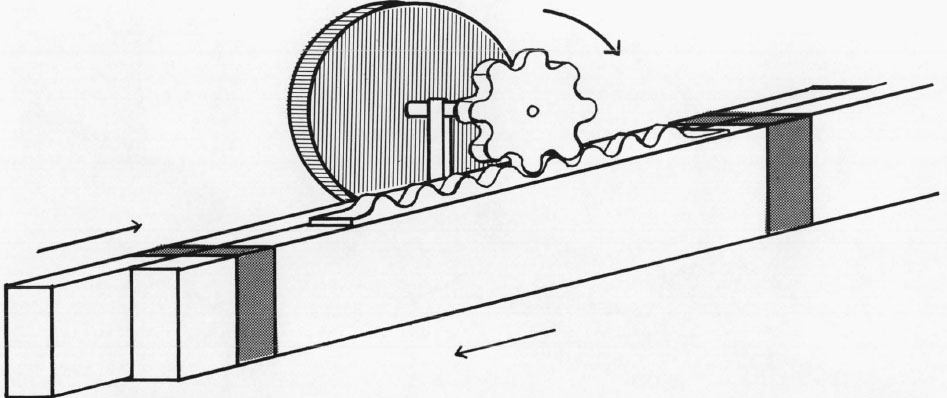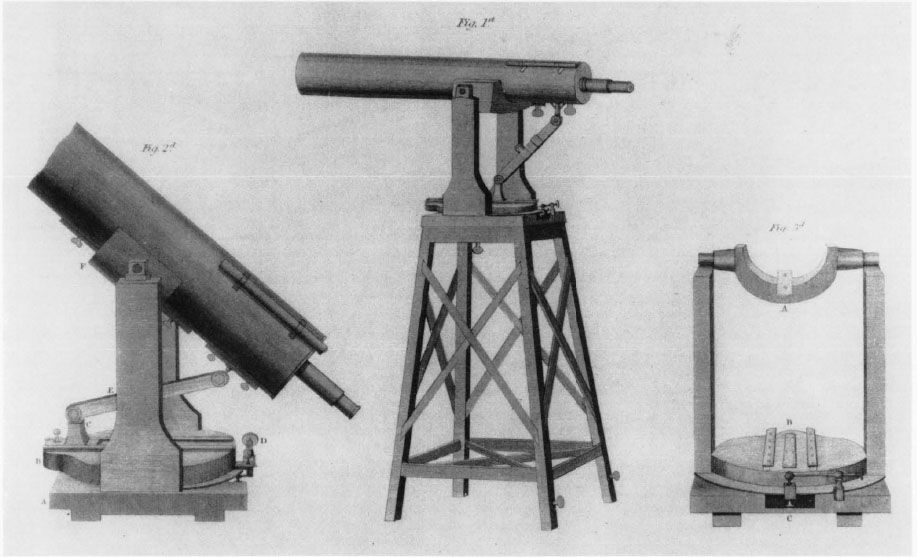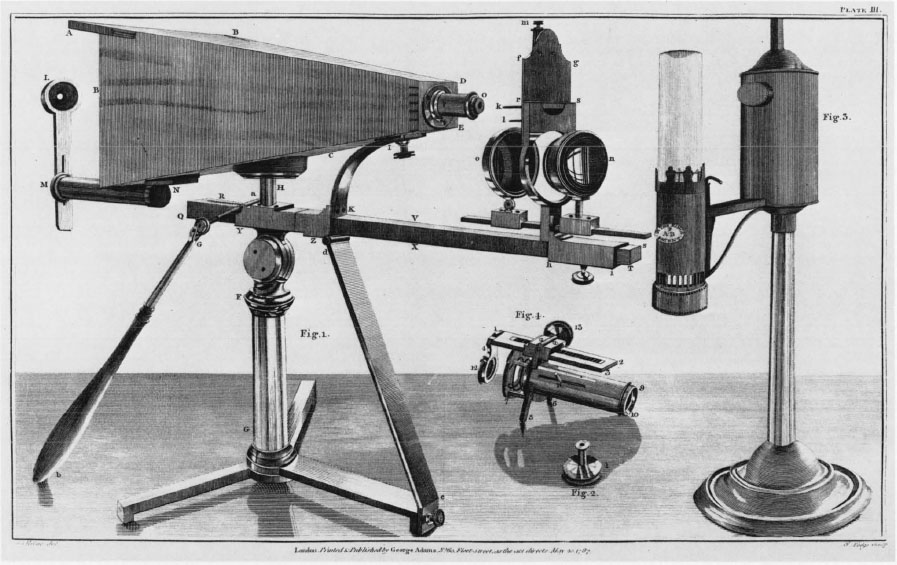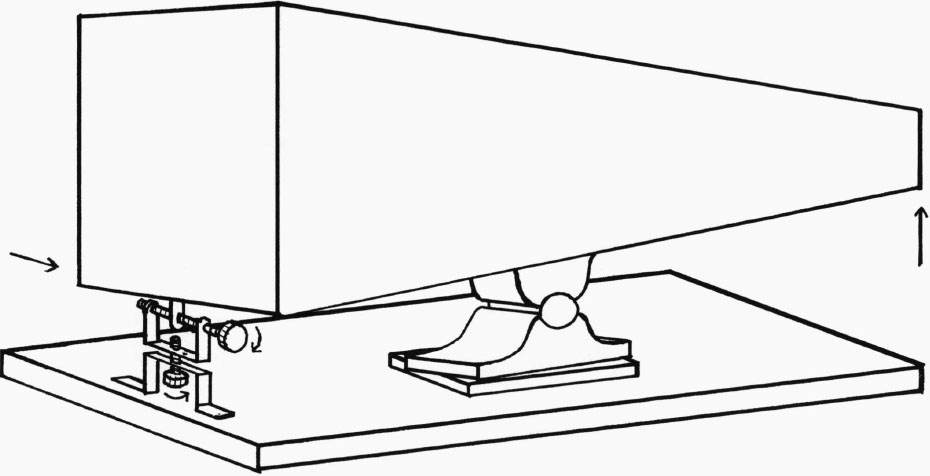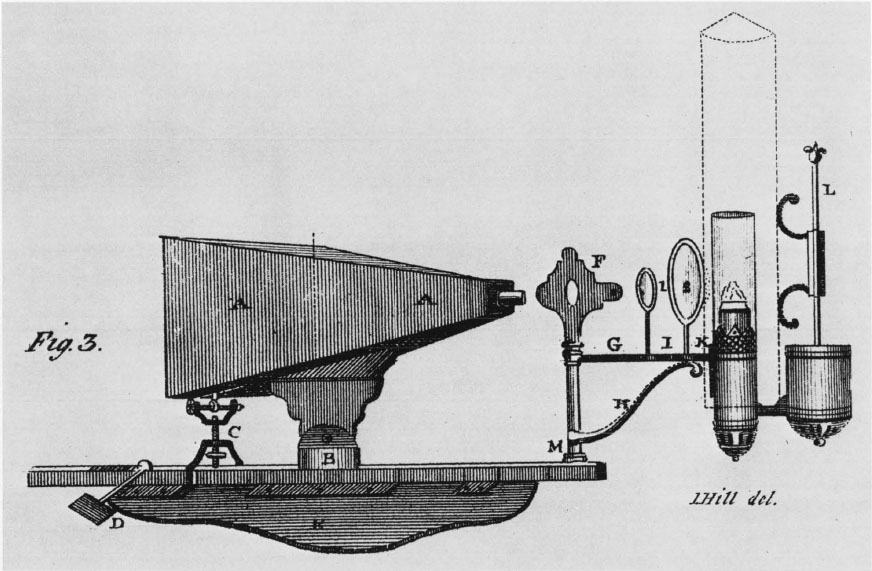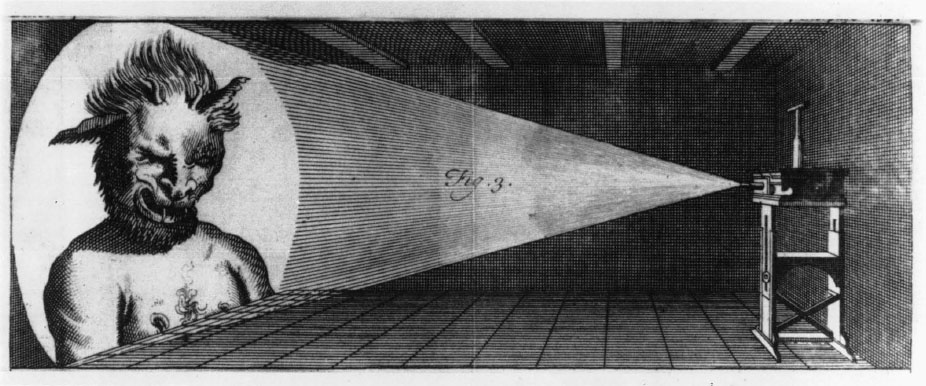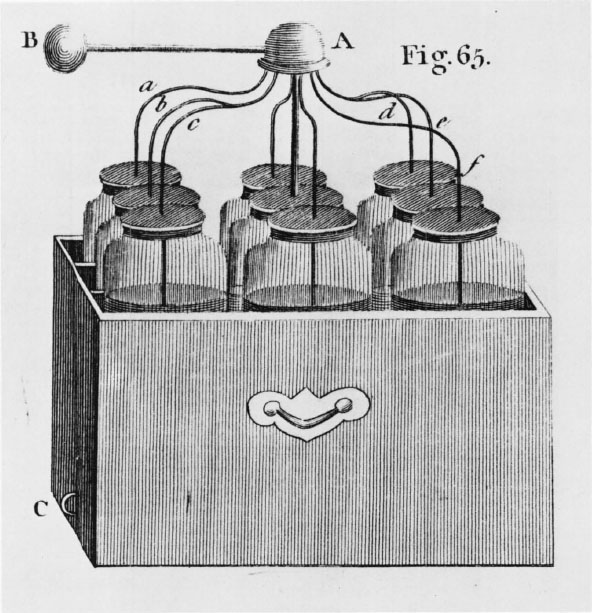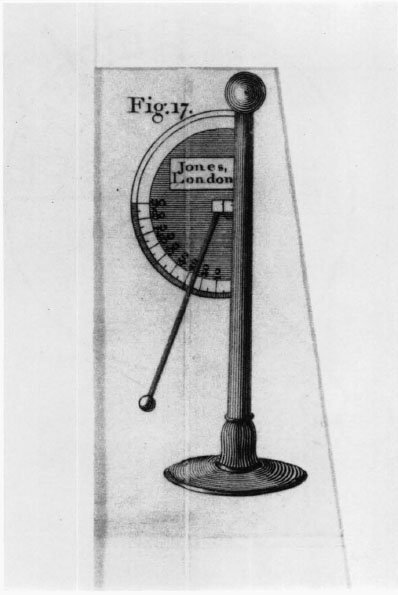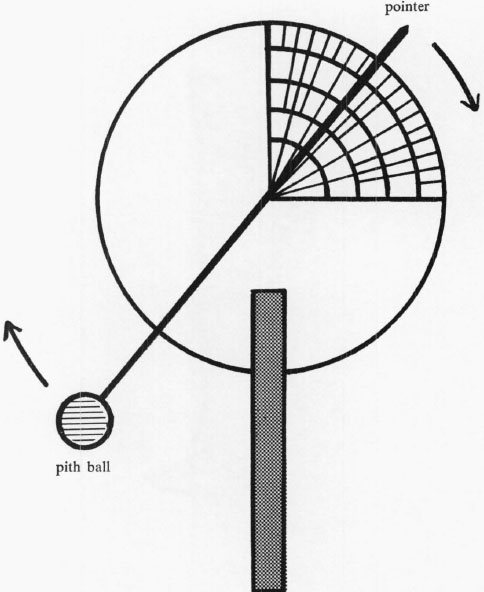John Prince and Early American Scientific Instrument Making
By Sara J. Schechner
FOREWORD
MANY years ago, when I was searching for background material on Harvard’s collection of early scientific instruments,1 I became particularly interested in the Reverend John Prince. He was obviously a figure worthy of scholarly attention because, although he was a self-trained amateur, he achieved a reputation on both sides of the Atlantic for his skill in designing, constructing, or refashioning scientific instruments, which he used himself and which he supplied to colonial or early federal colleges, including Harvard, Brown, Rutgers, Dartmouth, Williams, Amherst, and Union. Prince was in correspondence with the London instrument maker George Adams during 1792–1795, who adopted—without due acknowledgment—Prince’s improvement of the lucernal microscope. Thomas Jefferson especially recommended Prince to William Jones (Adams’s successor) and showed Jones a description of Prince’s “improved” air pump; apparently this was the account which had appeared in the first volume of the Memoirs of the American Academy of Arts and Sciences (Boston, 1785). Prince corresponded with Jones, who constructed and sold what he called “a large double barrelled air pump on the American construction improved,” that is, having “only one valve . . . as in Dr. Prince’s.”
As a historian of science with a particular concern for the colonial American scene, I found Prince an intriguing figure. While a Harvard student, he studied divinity under Samuel Williams, who was also interested in the sciences, and natural philosophy under the Hollis Professor, John Winthrop. When he was ordained in the First Church in Salem on 10 November 1779, his teacher Williams preached the ordination sermon.
There were hardly any manuscript documents readily available and so—as always when I had a problem relating to archival matters or sources—I turned to my constant mentor and guide, Clifford K. Shipton, then custodian of the Harvard University Archives. Ted Shipton greeted me and my problem with his usual warmth and made a number of valuable suggestions. He had a special concern for this research assignment since, as he told me, he would need just such information as I might turn up for his biography of Prince in Sibley.2 In the event, I did not uncover as much information as we both had hoped. Prince was not the main subject of my research at that time, being only one of a number of interesting figures associated in one way or another with the early Harvard scientific instruments.
Ted Shipton was always interested in the research problems of young scholars, many of whom later became fast friends and colleagues. He was never condescending in his attitude, and a young researcher was never made to be conscious of his own ignorance or lack of experience. For Ted all serious investigators were treated alike to a share of his great fund of scholarly information and worldly wisdom. He never made any distinction in rank, save perhaps to be a little kinder or more helpful to beginners than to established scholars.
For all these reasons, it is especially appropriate to have Sara Schechner’s essay on John Prince appear in a volume dedicated to Ted Shipton. Prince was a character of particular concern to Ted, and the author is a young scholar, a graduate student in History of Science at Harvard University. Ted would have been particularly delighted that Sara Schechner has, by her assiduity and skill in research, been able to unearth so much documentary material concerning Prince. Additionally, she has been able to evaluate the life and work of John Prince in terms of the science of his time and the scientific culture of New England. At the same time, she has made a valuable contribution to the new area of study: the manufacture, distribution, and use of scientific instruments in the eighteenth century. We may be especially grateful that her study (which grew out of her senior honors thesis at Radcliffe in 1979) is written in such a way that the chief aspects of the career and significance of this extraordinary man may become available to all readers interested in American cultural and social history and not merely specialists in science and its history.
I. Bernard Cohen
Harvard University
INTRODUCTION
Man is a tool-using animal. . . .
Without tools he is nothing,
With tools he is all.
—Thomas Carlyle
Mankind, unlike other tool-using animals, employs instruments in elaborate, conceptual ways to grip nature, not only to control her but also to cajole secrets from her. Like all human endeavor, the invention and application of tools is not an isolated or independent phenomenon. Theology, philosophy, politics, and art have exerted a profound influence on the nature and direction of this undertaking. Reciprocally, the development of tools often has precipitated radical responses in social spheres, and these interactions present one of the intriguing puzzles of human history. For science is the use of instruments, be they abstract or material, and the history of science chronicles the development of that use.*
In studies of the history of science, theoreticians are seen as molders of scientific structure, and engineers receive the credit for theoretical structures’ successful or useful applications. Unfortunately, such perspectives too often undervalue the role of science’s own toolmakers. Successful research in every age demands the use of dependable, precise instruments, and without the craft of designing and building those instruments, neither theoretical nor applied scientists could carry on their work. Thus, instrument makers play an important and continuing role in the practice of the scientific profession, a role which is, regrettably, often overlooked.
Furthermore, scientific instruments are a valuable index of the state of theory and of research in a given period. Each instrument necessarily reflects contemporary scientific ideas, because it is designed to demonstrate the consequences of some accepted theory. A Leyden jar, for instance, embodies the eighteenth-century notion that electric charge was a fluid requiring storage in a bottle. Also, evidence of earlier theories is seen in the vestiges these theories have left on apparatus. Clues to future theory are intimated by an instrument’s increasing precision, which enables it to resolve finer, more elusive phenomena, to challenge or to support the accepted theory of the time.
Improvement in instrumentation is dependent on the development of working methods, skills, and materials; and increasing precision is necessarily linked with the progress of technology. Conversely, better apparatus encourages change in scientific theory which, in its turn, has implications for technology. Hence, scientific instruments and their makers find themselves at an interface, indeed a critical interface, between theory and technology.
Early scientific apparatus is, however, more than a record of once-useful theory and technology. There is a definite aesthetic to instrument making. The artistry and craftsmanship in an instrument elevate it well above a common piece of hardware and illuminate a meaningful aspect of mankind’s view of science.
For these reasons, it is regrettably and unnecessarily narrow to perceive the history of science solely as a dialogue between exponents of given theories. The nature of scientific inquiry is vividly reflected in the craft of instrument makers, many of whose innovations contributed significantly to the development of science. This paper examines such an American instrument maker, the Reverend John Prince (1751–1836). The surviving instruments and letters of this man describe, in their own special way, the role and value of science in American life in the eighteenth and early nineteenth centuries, and they offer indispensable insights into the origin of American instrument making.

I
The Scientific Gentleman
In colonial Boston’s northern district on 22 July 1751, John Prince was born to parents of Puritan descent. Esther and John Prince, members of the New North Church, furnished their son, John, with a sound education to impress him with a sense of religious duty and a love of truth. Since his father was a mechanic and hatter, the son was encouraged to pursue a similar livelihood; at an early age he was indentured to a Bostonian tinsmith and pewterer, David Flagg.1
A career in the mechanical trades was an honorable occupation. Craftsmanship in pewter, tin and silver, furniture, pottery, textiles, and clocks, was highly praised in the American colonies, and artisans were well respected in the community. Craftsmen often achieved considerable social status, and many of the American Revolution’s leaders were drawn from their ranks.2 Nonetheless, Prince was not solely inclined to the manual arts. As a child, his favorite pastime was literature rather than sports, and during the spare moments of his apprenticeship, he read voluminously. Upon completing his indentures, Prince abandoned this trade and devoted himself to intellectual pursuits.3
During this period Prince learned to speak Latin in verse and prose, as well as read Virgil and Cicero extemporaneously. If he desired to further his education at Harvard College, Prince also had to “construe and Grammatically to resolve ordinary Greeke, as in the Greek Testament, Isocrates, and the minor poets, or such like, having withall meet Testimony of his towardliness.”4 Passing these entrance requirements, Prince enrolled in Harvard College in 17725 at the age of twenty-one in a class composed of teen-agers. He excelled in his studies, and in 1774 the Harvard Corporation awarded him a £10 per annum scholarship on the Thomas Hollis foundation as well as excusing him from commons in 1775.6 His bachelor’s degree was conferred on 14 August 1776.7 As was common during this period, Prince spent the next three years teaching grammar school while he worked on his master’s thesis and studied divinity with the Reverend Samuel Williams of Bradford, Massachusetts.8 In 1779, Prince successfully defended his thesis at Harvard9 and was ordained at the Congregationalist First Church in Salem on 10 November of that year.1
Prince had become engaged to Mary Bayley of Boston while he was still apprenticed to David Flagg, and throughout his years of education, he had remained faithful to her and had never courted.2 Prince married this woman, and the couple’s first child, John, was born 19 April 1782 in Salem. John Prince, Esquire, in turn, graduated from Harvard in 1800 and worked as the Clerk of the Courts of Essex County.3 Also a skillful bookbinder, he elegantly bound all of his father’s volumes. The couple’s second son was mentally retarded.4 After Mary Bayley Prince died at the age of fifty-two on 4 December 1806, Prince did not remarry for ten years. Milly Waldo, the fifty-five-year-old widow of Jonathan Waldo of Salem, became the clergyman’s second wife on 27 November 1816.5 Milly gave birth to a son, but he was a sickly child.6 On 15 November 1817, Prince celebrated the birth of a healthy grandson, William Henry Prince. Like his father and grandfather, William attended Harvard and graduated from Harvard, in 1838. He became a physician and worked as the able superintendent of the mental hospital in North Hampton.7
During the American Revolution, John Prince was an interested spectator who closely and attentively followed the events from the Boston Massacre and the dumping of the tea to the battles of Lexington, Concord, and Bunker Hill.8 Perhaps his decision to refrain from active participation in the war rested on his conviction that disciplined armies are instruments “for the destruction of mankind,” that a “general, with his military machine, is, by barbarous deeds, adding a few acres more to his master’s dominions.”9 Prince’s poor health was further reason for him to assume a passive role in the war.
From early life Prince was sickly, and his parents were apprehensive that he would die during childhood. At the time of his ordination, in fact, his precarious health so alarmed the church congregants that they seriously questioned their selecting a pastor who might soon be buried. Before the vote was taken, Dr. Joseph Orne, a physician, answered this objection. There was still a possibility of Prince’s recovery; he might even live to bury the whole congregation, Orne asserted. Indeed, this prediction turned out to be true. Although the clergyman suffered from tuberculosis, a double hernia, and frequent bouts with influenza for over fifty years, he otherwise enjoyed relatively good health for most of his long life. Age did not impair his eyesight, senses, digestion, appetite, muscle and nerve activities, or his mental acuity. For the last twelve years of his life, however, Prince suffered excruciating pain from kidney stones and violent attacks of prostatism, which eventually caused his death. His kind congregants released their pastor from his arduous tasks and settled the Reverend Charles W. Upham as his colleague on 8 December 1824. Despite his infirmities, Prince always loathed idleness; “his eyes and ears were always open and his hands were always busy.”1 He therefore continued his ministerial duties and scientific activities as industriously as he could. In his old-fashioned dress and his shoulder-length white curls, the eighty-four-year-old Reverend Dr. Prince preached his last sermon on 17 April 1836, and he died on 7 June after serving fifty-seven years and seven months in the ministry.2
Upham attributed Prince’s longevity to his naturally cheerful temperament and “to the benign influence of his scientific and philosophical pursuits.”3 While John Prince’s voracious quest for knowledge initially fostered these scientific interests, it was his early apprenticeship in the manual trades and his Harvard education which jointly encouraged his endeavors in experimental science and instrument making in particular.
The eighteenth-century Harvard curriculum provided that all freshmen study logic, sophomores devote themselves to logic and physics, juniors explore geography and physics, and seniors absorb themselves in arithmetic, geometry, and astronomy. Required texts were Isaac Watts’s The Knowledge of the Heavens and Earth Made Easy, Patrick Gordon’s Geography Anatomiz’d: Or a Compleat Geographical Grammar, and Willem Jakob van ’sGravesande’s Physices Elementa Mathematica, which had been translated by J. T. Desaguliers as Mathematical Elements of Natural Philosophy, Confirmed by Experiments, or an Introduction to Sir Isaac Newton’s Philosophy.4 The professor responsible for teaching this material to John Prince was John Winthrop, Hollis Professor of Mathematics and Natural Philosophy, whose course of lectures was designed:
to Instruct students in a system of natural Phylosophy & a course of Experimental, in which to be comprehended Pneumaticks, Hydrostaticks, Mechanicks, Staticks, Opticks &c in ye Elements of Geometry, together with the doctrine of Proportions, ye Principle of Algebra, Conic Sections, plain & spherical Trigonometry, with ye general Principles of Mensurations, Plains & Solids, in ye Principles of Astronomy & Geography, viz. the doctrine of ye Sphere, ye use of ye Globes, ye Motions of the Heavenly Bodies according to ye different Hypotheses of Ptolemy, Tycho Brahe & Copernicus, with ye General Principles of Dialling, ye Division of ye world into its various Kingdoms, with ye Use of ye Maps &c.5
The rules and regulations pertaining to the Hollis chair explicitly stipulated that demonstrations be performed with scientific instruments:
The lectures which shall be delivered in the Philosophy Chamber to the resident Bachelors and the two Senior Classes, between the twenty-first of March and twenty-first of June annually, shall contain a complete course of Experimental Philosophy, in the various branches of it; and in the progress of the experiments, the principles and construction of the various machines made use of, shall be explained.6
These lecture demonstrations were an integral part of the Harvard education. Yet, in Prince’s senior year during the American Revolution, “thro’ the difficulty of the times, & the late dispersion of the College, the Professor of Mathematics & Natural Philosophy . . . had been unavoidably prevented hitherto from carrying the Students through his Experimental Lectures (a very important branch of their education).” Consequently, the Corporation voted on 24 June 1776 to postpone summer vacation so that the demonstrations could be performed.7
These lectures stimulated Prince’s interest in scientific apparatus while they taught him theoretical and experimental science. The metalworking skills he brought to Harvard enabled him to understand the construction of instruments and fueled his thought on ways to improve them. Thereby coupling his mental and manual dexterity, the course in natural philosophy and the apprenticeship encouraged Prince to build scientific instruments. It is quite conceivable that John Winthrop recognized his student’s talent in this area and regularly employed him to repair the Harvard apparatus. The first record of Prince’s extensive repair work for the university dates back to 1779, only three years after he graduated.
Prince’s scientific activities were no mere hobby beside his parochial duties. The church parsonage was his shop and laboratory. That he apportioned his time equally between scientific and religious matters did not alarm his congregation or his colleagues. In the eighteenth century there was no battle raging between the Protestant faith and Newtonian natural philosophy. In the Manuductio ad Ministerium, Cotton Mather had advised candidates for the ministry in 1726:
What we call NATURAL PHILOSOPHY, is what I must encourage you to spend much more Time in the study of.
Do it, with continual Comtemplations and agreeable Acknowledgements of the Infinite GOD, whose Perfections are so display’d in His Works before you. . . .
And therefore, as thorough an Insight as you can get into the Principles of our Perpetual Dictator, the incomparable Sr. Isaac Newton, is what I mightily commend unto you.
Be sure, the Experimental Philosophy is that, in which alone your Mind can be at all established. . . .
But you must also soar Upwards, to the Attainments of ASTRONOMY. . . .8
In the tradition of Cotton Mather, the New England clergy encouraged the study of natural philosophy and employed scientific discussions in their sermons. Since there was no more tangible way to know God than from his marvelous handiwork, natural philosophy bolstered natural theology.
Likewise, the academic community was not averse to finding clergymen among its scientific ranks. Over twenty-three percent of the charter members of the American Academy of Arts and Sciences in 1785 were ministers and doctors of divinity.9 Many of the century’s foremost professors of mathematics and physics were also clergymen. The Reverend Samuel Williams, the minister with whom John Prince studied divinity, succeeded John Winthrop as the Hollis professor of mathematics and natural philosophy in 1780. During this same decade, the president of Harvard College, the Reverend Joseph Willard of Beverly, instructed the students in mathematics and astronomy. The Congregationalist clergyman, Thomas Clap, researched meteors and promoted a scientific curriculum during his presidency of Yale College (1739–1766). President Ezra Stiles, a Newport minister, furthered Clap’s work at Yale after 1777, while personally experimenting with electricity and silkworms.1 At Rhode Island College (now Brown) a Raynham, Massachusetts, pastor, Peres Fobes, taught natural philosophy from 1786.2
Not only did the academic community accept clerics as scholars, but laity and clergy held virtually identical views of the role of science: it was “for ye promoting of usefull knowledge, and to ye advancement of natural and revealed Religion.”3 Even in the key college textbook of the eighteenth century, ’sGravesande prefaced his Mathematical Elements of Natural Philosophy, by reflecting that natural philosophy
. . . considers the Works of the Supreme Wisdom, and sets forth,
What Laws JEHOVAH to himself prescribed,
And of his Work the firm foundation made,
When He of Things the first Design surveyed.4
The “Rules and Orders relating to a Professor of Mathematicks, of Natural & Experimental Phylosophy,” drawn up by the wealthy London merchant, Thomas Hollis, stipulated that the professor, being of the Protestant reformed religion, should “promote true piety & Godliness by his own Example and Incouragement.”5 These sentiments continued unabated throughout the eighteenth century, for when these rules were revised, the Harvard Corporation more explicitly stated:
That the Professor be directed, while he is delivering his Philosophical and Astronomical Lectures, to make such incidental reflections upon the Being, Perfections and Providence of God, as may arise from the subjects, and may tend seriously to impress the minds of youth.6
This was precisely the prescription John Winthrop had followed in his lectures to John Prince. After explicating the Newtonian theory of comets, Winthrop assured his class that comets reminded man of both divine justice and providence. As God’s agent, a comet perhaps had caused the Great Deluge, he asserted, citing William Whiston’s theory; nonetheless, the eccentric orbits of other comets had been as wisely contrived by God to prevent collision with the planets. Calculating transits and eclipses, determining the sun’s parallax, were the exercises which testified to God’s existence and omnipotence.7
Whether it was John Winthrop’s natural philosophy course or Samuel Williams’s divinity instruction which shaped John Prince’s attitudes towards science, Prince envisioned his scientific work to be in complete harmony with his theological endeavors. A staunch believer in the argument from design, Prince maintained that man’s noblest pursuit was found
in promoting a knowledge of the works of nature among men, and leading their minds through these footsteps up to their Divine Author: in making the best and noblest use of Philosophy, that of expanding the idea of the Supreme Being in the minds of men, and impressing them with proper sentiments of piety towards him.8
As a result of the confluence of theological and natural philosophical thought in the eighteenth and early nineteenth centuries, many of the same people attended both ecclesiastical meetings and public lectures. This was true of the religious and secular circles in which Prince traveled. At the local church association gatherings Prince chatted with some of his oldest scientific friends—the Reverend William Bentley, the linguist who declined Thomas Jefferson’s offer of the presidency of the University of Virginia; the Reverend Manasseh Cutler, the Ipswich Hamlet botanist and astronomer; the Reverend Thomas Barnard, an amateur philosopher.9 All three men were members of the Salem Philosophical Library. Barnard and Cutler were instrumental in purchasing this valuable scientific library in 1781 with the aid of Prince, President Joseph Willard, and Dr. Edward Augustus Holyoke, a noted physician. Consisting of 116 books and containing an unusual selection of Continental works seldom found in the United States, the collection had been Dr. Richard Kirwan’s private library, which had been aboard a vessel captured in the English Channel during the American Revolution by Hugh Hill, a Beverly privateer. The Salem organization proposed a remuneration to Kirwan, but he declined the offer since he felt quite satisfied that his books had been excellently appropriated for excellent ends.1
Although the Philosophical Library was housed by Joseph Willard for a year, it was shipped to Prince’s home in Salem in 1782 when he became the collection’s librarian.2 This was a proper choice of location. Having continued the voluminous reading which had distinguished his childhood, Prince kept in constant touch with the London booksellers, received their catalogues, and discriminatingly added to his personal library. By the end of his lifetime, the clergyman’s library contained roughly 3,500 volumes, an extensive collection of engravings, artwork, natural curiosities, and philosophical apparatus (either made or improved by himself). Almost all of Prince’s theological works were included in a bequest of 453 volumes which he left for successive ministers of his church to use.3 Thus, there remained 3,000 volumes of a possibly scientific nature. When one considers that in the early nineteenth century the college libraries of Yale, William and Mary, Columbia, Brown, and Dartmouth each held only 3,000 volumes, Tusculum 2,000, Transylvania 1,300, Pennsylvania 1,000, Union 800, and Williams 600,4 Prince’s collection was outstanding. Indeed, Upham was quite justified in declaring his predecessor’s library to be “as rich, and various, and valuable a depository and treasury of literature and science, as have ever been possessed by a private gentleman in this country.”5
The library and apparatus were equally accessible to friends and strangers. On one of his visits to Salem, Benjamin Silliman of Yale could not refrain from marveling:
It was surprising to observe the great amount of intellectual and physical material which he had accumulated within his domestic confines. In his study, although not small, you literally threaded your way through alleys and vistas of books, instruments and specimens, and not an inch of room was lost in the skillful disposition of this philosophical panoply.6
This private library and the Kirwan collection attracted many scientific personages to Prince’s abode besides Silliman. Nathaniel Bowditch, author of The Practical Navigator (1799) still used today and translator of Laplace’s Mécanique Céleste (1814–1817), obtained access to the Philosophical Library while still a ship chandler’s apprentice.7 Other visitors included the maker of astronomical clocks, surveyor, and engraver, Walter Folger, a man who presided over the Nantucket Philosophical Institute and who regularly corresponded with Jefferson, Bowditch, and Prince. Another Salem friend was Nathan Read, whose 1789 experiments with paddle wheels on the Porter River amused Prince. Before organizing an iron foundry in 1796 near Salem, Read also invented and patented a multitubular boiler, a double-acting steam engine for transportation and navigation, and a machine to cut and head nails in a single operation.8
Whether dining together on the first salmon of the season or charging books out of the Philosophical Library, the lively activities of this Salem scientific coterie were well documented in the Reverend Dr. Bentley’s diary. In 1786 Prince and Barnard organized a monthly lecture series which traveled from house to house. The cold weather in the 1790s provided unending fascination for the scientific community; Prince, Holyoke, and Bentley avidly and repeatedly compared notes on the subzero temperature, in order to contrast the freezing weather with that of the winter of 1772. In a mildly competitive manner, each of the three men obtained a certain satisfaction in having his thermometer read lower than anyone else’s did. Interest in meteorology was also manifested as concern for the weather’s victims, and Bentley worried about Prince, who was thrown from a sleigh in the terrible, snowy road conditions of 1792. In 1794, Prince described for Bentley how a local woman’s lockjaw was successfully treated by electrical shocks; and the whole community turned out in 1797 to test a new fire engine from Philadelphia, which was designed by Briggs. “It raised water to the top of the Shingles on Prince’s meeting, 100 feet,” Bentley noted with amusement.9
Prince was always eager to demonstrate a piece of scientific apparatus to anyone who stumbled into the parsonage or paid him a social call. Visiting friends relished these diversions from their daily routines. Bentley enthusiastically recounted a typical visit to Prince’s church on 8 January 1818:
I was lead [sic] to search the records of the Old Church for what I did not find but received much attention from Dr. Prince who was employed upon his portable air pump which could perform two operations at a time in two receivers. I saw also his workshop. . . . He shew me his machine to secure the most sure cut of his focus, which worked perfectly. He then exhibited his microscope for transparent & then for opake bodies & his method of ascertaining the magnifying power by lines admirably marked & placed near the object. His camera [projection lantern] exhibited as near life as such a thing can particularly some fine paintings & colourings of refuse. His views of Rome were next, the other plates were of less perfect character & of diminished effect. . . . He had constructed a cone, having parts moving on a common center of which the largest at bottom received the larger volumes [of books], & so the less till the top, giving space & ingeniously disposed in segments for the purpose. He exhibited Donegan’s insects. . . . He exhibited his horizontal thermometers to discover the height to which it had arisen & another the degree to which it had fallen, by a body moved within the tube.1
It was not uncommon for Prince to extend the invitation, “Will you come and take tea with us, and in ye evening see my lucernal microscope.”2 On social occasions, he delighted and educated his guests with parlor demonstrations of natural phenomena.
By means of optical instruments he was enabled to make a most satisfactory display of all these treasures of knowledge. In the course of a winter’s evening, his delighted visitor, sitting all the while quietly in his chair, was enabled to inspect the temples and the structures of ancient and modern Rome, to explore the ruins of the old world, to traverse the streets of London, Paris, and St. Petersburgh, to visit the villas of Italy, the noblemen’s seats in England, to watch the successive aspects of an eruption of Aetna or Vesuvius, and literally to survey the whole earth and the glories of it.
Thus did our venerable philosopher make science contribute to his own happiness and improvement, and to the happiness and improvement of his friends and acquaintances.3
Although Prince rarely lectured publicly, “as an experimental lecturer and operator, in his own parlor and surrounded by his private friends, he was never surpassed by any public professor of science.”4 While the clergyman’s sermons indicated his intimate acquaintance with all key ecclesiastical literature in Latin and English and his knowledge of the history of the Church’s opinions, Prince’s novel parlor entertainment displayed his firm grasp of the elements of astronomy, optics, pneumatics, botany, mineralogy, chemistry, entomology, as well as his cultivated taste in fine arts, architecture, and history. Thus, the First Church parsonage housed not just a pastor, but a well-educated theologian gifted in performing marvelous scientific experiments and demonstrations, a private library comparable to most college libraries of the time, and the noted Kirwan collection of books. No further incentive could possibly be needed to attract the local scientific community to Prince’s door!
Outside of his local circle, Prince earned British and American recognition when his ingenious air pump improvements were published in the Memoirs of the American Academy of Arts and Sciences in 1785. Natural philosophical journals applauded the clergyman’s research, construction, and workmanship, while the country’s learned societies warmly opened their doors to him. By 1785, Prince was a fellow of the American Academy of Arts and Sciences;5 the Massachusetts Historical Society admitted him as a member in 1793,6 and the American Philosophical Society later did the same.7 Brown honored Prince in 1795 with a Doctor of Laws degree.8 These associations enabled Prince to establish contact with a wider scientific community. One possible result of these far-reaching connections was the visit of Alexander Wilson, the Scotch-born ornithologist, to Salem as John Prince’s guest in 1808.9
Thus, Prince’s radical air pump design was his admission ticket to these national academic circles, his initial claim to fame. His education in the manual trades and in the experimental sciences had encouraged him to design and build such instruments, while the religious and secular communities continued to provide the critical support he needed for this endeavor.
II
The Scientific Instrument Maker
A considerable improvement in the Air pump has taken place in America. You know that the valves of that machine are it’s [sic] most embarassing parts. A clergyman in Boston has got rid of them in the simplest manner possible.
—Thomas Jefferson1
While these few sentences aptly convey the ingenuity of John Prince’s improvements on the air pump, they also apply appropriately to every other scientific instrument which passed through his hands. To perfect an instrument, Prince did not conceal its “embarassing parts,” or hide its flaws behind a screen of false remedies. The mechanically gifted clergyman did not believe in circumventing problems in this manner. With genuine insight into the inner workings of an instrument, he challenged the basic structure of the apparatus, questioned the design of each part, evaluated the necessity of every nut and bolt, and weighed all possible alterations for their relative utility. In the instruments which emerged from these efforts, Prince never sacrificed simplicity in achieving versatility, accuracy, or efficiency.
Nonetheless, changes demonstrated on paper are not so persuasive to a natural philosopher as those embodied in a working instrument, and in assessing Prince’s contribution in the realm of scientific instrumentation, one must keep this in mind. It is important to know whether Prince pushed a chisel as well as a pencil, whether he hammered out his ideas in metal and wood as well as on paper. One needs to consider his workshop, the tools and manpower available for his use, his capabilities as a mechanic and a craftsman, the degree and impact of his isolation from other instrument makers. In light of these advantages and handicaps, one must view Prince’s endeavors from the eyes of contemporary instrument makers in order to see the value they placed on the clergyman’s work. It is necessary to set the stage in this manner before analyzing the specific improvements in the instruments Prince built with his own hands.
With respect to available tools, the First Church parsonage was well equipped for Prince to construct apparatus. In his workshop, Prince had collected the usual yet indispensable tools of the trade2 along with some uncommon implements. Although it seems Prince did not have a forge, he did have a lathe to turn curved pieces. He also had personally designed a highly unusual solid steel planing machine for finishing flat brass surfaces. His adeptness at manipulating these tools earned the admiration of the Reverend Dr. Bentley, who praised Prince’s workshop and skill:
He was provided with excellent tools for all works in metals, having been in early life an apprentice to the Pewterer’s trade under Flag in Boston & having an early adroitness in use of tools especially turning in metals. . . . We can find no person more distinguished as a mechanic. The workmen of Europe & America praise the specimens of his work especially in brass. . . . Our mechanics admire his tools.3
From Bentley’s diary it is clear that Prince not only had the capabilities of a workman, but continually used his skills to build instruments worthy of distinction.
Yet, the fact that Prince enjoyed international recognition is by itself insufficient to show that he had the undivided assistance of fellow instrument makers and users. In one respect, Prince did not work alone; he hired workmen and lived in a supportive community of scientific gentlemen. In another sense, however, Prince conducted his investigations in isolation, removed from the great center of scientific instrument making in London. Prince’s apprenticeship had taught him the metalworking skills requisite to instrument making, but it had not instructed him how to graduate arcs and rules, how to polish mirrors, how certain metals interacted with one another, and so forth. Such knowledge was rarely recorded, but passed on by word of mouth from teacher to apprentice, from colleague to colleague. Without direct access to the London workshops, a self-taught, solitary worker, such as Prince, could not acquire the tricks of the trade which would facilitate his labors. Depending solely on his own resources, Prince had only his experience to guide him. In a letter to President Fitch of Williams College in 1795, Prince lamented this predicament when he described the construction of an equatorial:
On my return home, the ingenious young man, whom I have always employed to do my brass work, and who had begun the brass box for the needle, could not finish it immediately. His brother who worked with him, was very sick of a fever, and required all his attention. The brother died. In two days more he took the fever himself, and died in ten days, and left me destitute of workmen to finish the matters I had undertaken. I got the instrument from his shop as soon as I could in the unfinished state, and went to work myself to complete it; and when I had done it to my own satisfaction, as I supposed, to my great disappointment and mortification, I found all the labor was lost. For, on putting the needle into the box, which is of a parallelogram form, about six tenths of an inch in width, I found the box, though made of brass, attracted the needle to its side and would not allow it to play freely. This was a circumstance entirely new and unexpected. I never had an idea of any kind of brass being magnetic, and could not account for the phenomenon for some time. But on trying several other pieces I found that the box was not the only one that attracted the needle. Several pieces did the same; others did not. This quality must be owing to the impurity of the brass. Some steel filings or small particles of iron must have accidentally mixed with it in casting. It would have been fortunate for me if I had made the discovery before it was worked; but the thought never occurred to me. Too much of our knowledge (considering the shortness of life) comes to us by dear bought experience.4
While useful pointers in manufacturing instruments were unavailable to the isolated American craftsman, standard working materials were not locally obtainable either. This latter problem proved to be more of an obstacle than the former one. A single letter could preserve several generations’ worth of practical experience, but glassware and other items had to be regularly imported from England well into the nineteenth century. Furthermore, American instrument making was dependent on the promptness of British shipment,5 and poor packing in London resulted in more glass breakage than the Americans’ negligence in handling. Prince could only hope that the glassware he ordered would arrive intact and be of good quality. In many cases, items received were not according to order and had to be used nonetheless. In repairing an electrostatic machine in 1791, for instance, Prince had ordered two glass cylinders and some glass rods and tubes. The glass rods which arrived were not according to his order, while:
One large tube . . . was broken into a number of pieces, by not being well packed in London, ye heavy solid glass sticks getting loose among them destroyed one. One of ye cylinders also broke soon after they arrived. I believe from not being properly knealed had as new glass frequently does. I had been rubbing a little dirt off of ye corner of ye neck and left it: it snapped with ye report of a small pistol, so as to be heard thro’ ye whole house ye neck was compleatly taken off tho’ 4 inches diam: & 1/2 inch thick. It gave me much uneasiness, as it reduced me to one chance, and I did not know but ye other [cylinder] might do ye same.6
These were the types of obstacles which Prince had to surmount by his own ingenuity in his earliest instrument making.
Prince overcame his early isolation by publishing an account of a novel air pump in the 1785 Memoirs of the American Academy of Arts and Sciences. This article acted as a letter of introduction to the London instrument makers, and correspondence commenced between Prince and George Adams. At the same time, Thomas Jefferson deposited a description of Prince’s pump with the firm of W. and S. Jones, although these instrument makers did not act on it.7 After Adams’s death, the two brothers realized how fruitful their predecessor’s association with Prince had been. They remembered the air pump paper and became eager themselves to correspond with Prince. On 18 February 1797 William Jones wrote:
A correspondence with you, sir, will be as flattering as it is desirable. I have long heard of your knowledge and expertness in science, and shall be happy to receive any communications that have resulted from your study and experience.8
And on 3 July 1797 Jones again solicited Prince’s letters:
Your celebrity as a philosopher is not a little known in this country. Mr. Jefferson many years ago, mentioned your name to me, and showed me the description of your air pump. A correspondence with you respecting science and instruments, will be highly gratifying to me, and what small leisure an unremitting attention to business will permit, I shall be happy to snatch occasionally for your information.9
The London instrument makers admired Prince’s mental as well as manual dexterity. They respected his ideas and were enthusiastic in sharing with him some of their instrument making know-how.
This exchange partially reduced Prince’s isolation from the activities, methods, and ideas of contemporary instrument makers. Today the correspondence is equally important for the researcher, since it documents the clergyman’s highly original thought and fertile scientific mind. John Prince never sought prestige nor bothered to appropriate the recognition due him for discoveries or improvements. Disdaining the forum of scientific publications, Prince preferred to communicate by private letter to local friends or London instrument makers, any improvements he made in instrument design and use.1 The letters, which contained precise, complete discussions illustrated by elaborately executed pen drawings, were “a body of instruction such as can no where else be found, and would be regarded as an invaluable directory, by all whose business or whose pleasure it is to make use of the instruments of science.”2
The contribution John Prince made to instrument design should be viewed in the context of both the personal obstacles and the major scientific problems which confronted him. In the eighteenth and early nineteenth centuries, professional and amateur scientists alike were intent on solving problems pertinent to the nature of matter. Theoretical questions about divisibility, charge, affinity, energy, friction, inertia, elastic collisions, vacuum, hydrostatics, and electricity fascinated the natural philosopher. In the practical sphere, navigation demanded accurate measurements of longitude at sea and precise descriptions of the earth’s shape, and thereby encouraged advances in positional and physical astronomy.3 Consequently, the improvements Prince made on air pumps, microscopes, telescopes, and electrostatic devices, were of cardinal interest at the time.
The eighteenth-century textbook of natural philosophy described air as fluid, corporeal, elastic, transparent. It was considered essential for the existence of life, flame, sound, and light. Air could be compressed or rarefied, but only within certain bounds,4 and air pump experiments were designed to assess these limits while demonstrating air’s properties. The mass of various quantities of compressed air was determined, while other items were weighed in vacuo to find the extent to which air pressure bolstered up different-sized objects. Atmospheric pressure was employed violently to shatter glass vessels or playfully to move Cartesian divers up and down in a container of water. Students repeated Boyle’s guinea and feather experiment or they placed birds, mice, or fish in evacuated receivers to see how much air these creatures needed to survive.5 Other experiments connected air pumps with electrostatic machines to study the luminescence of ionized gases.6
None of these experiments demanded a complete vacuum. Although there was little doubt in the minds of eighteenth-century academics that a vacuum existed in nature, the variety of arguments marshalled against the plenum view indicates that everyone was not thoroughly convinced earlier in the century. Most instrument makers agreed, however, that the physical universe had interstices devoid of all matter; for without empty space, they argued, motion could not occur. Yet, for both theoretical and practical reasons, no adherent of the vacuum theory truly believed that an absolute void was obtainable in an air pump receiver. Boyle had calculated that the springiness of air would cause a volume originally at atmospheric pressure to expand 13,769 times when placed in an environment free from any external forces;7 that is, air pressure had a lower limit set at .06 mm of mercury. In practice, it was not clear whether air pressure could reach this lower limit in the natural world, or even whether any mechanical means could possibly rarefy air to that degree. Empirical findings had always fallen far short of theoretical expectations in new air pump designs. Only after a new pump had achieved a better vacuum, did inventors become convinced that the mechanical limit of rarefaction had not been reached previously. With his new pump, Prince’s contribution to this discussion won him acclaim.
In the air pump invented by Otto von Guericke in 1654, the receiver and vessels had to be placed under water to prevent air from leaking into the joints, but subsequent improvements by Hooke and Boyle rectified that problem.8 At the turn of the eighteenth century, Hauksbee designed a double-barrel air pump having an oiled, leather flap valve on each piston and another at the base of each barrel.9 Raising one piston would decrease the air pressure in the barrel and thereby cause air in the attached receiver to rush into the barrel through the lower intake valve. When the piston was depressed, this intake valve would close while air would be forced into the barrel above the piston and be expelled as the piston again rose. Referred to as the common air pump, this design was manufactured throughout the century by firms such as Martin or Nairne.1
Despite its popularity, the common air pump could only permit a vacuum of 7.6 mm.2 Smeaton recognized that this limitation derived from the design of the lower intake valve and the space left between the piston and barrel.3 He improved the pump in 1752 by exposing more surface area to the lower intake valve, and by fitting the piston more precisely to the barrel. In addition, he closed off the barrel top with a leather gasket, a plate, and an exhaust valve. This removed atmospheric pressure from the piston valve, and allowed the piston to work effortlessly. By means of a pierced stopcock, he also designed the pump to compress air as well as exhaust it.4
Working six times better than the common pump, Smeaton’s version achieved a vacuum of 1.27 mm. This was, however, only five percent of the efficiency predicted by theory, and people began to believe that air by nature could not be rarefied more than 600 times.5 Prince’s pump proved this false.
Unable to obtain a Smeaton pump from London, Prince decided to construct his own based on Smeaton’s design. Prince soon recognized that radical alterations would be vast improvements. A better vacuum depended on all valves opening easily, and Prince simply decided to remove the lower valve altogether, since the top valve made the lower one completely unnecessary. Therefore, the barrel communicated directly with the receiver via a pipe (in the barrel sidewall) just above the lowest point of the piston’s stroke. On this modification Prince modestly commented, “I supposed the valves to be a great obstruction, and have endeavored to avoid them: and if no further advantage be derived from it, the machine is more simple without them.”6 Prince also connected the two top valves to a single cylinder “valve pump,” so that air leaving the barrels did not need to overcome atmospheric pressure on these valves. Thus, to completely exhaust the receiver, one simultaneously worked both pumps.7
Prince paid attention not only to his pump’s efficiency and simplicity, but also to operating ease and versatility, with both the user and repairer in mind. He made the pistons easier to depress, designed the pump to compress air as well as exhaust, and constructed a separate condenser to reach very high pressures. Prince added a mercury compression gauge, a 32–33 inch manometer, and a Chippendale case to hold apparatus and protect the barrels from dust and accident. With other maintenance in mind, Prince sank all joints in oiled-leather sockets to guarantee airtightness and enabled the pistons’ relative positions to be adjusted.8
As a piece of furniture, Prince’s pump was aesthetically pleasing; as a piece of scientific instrumentation, it was remarkably elegant. Capable of rarefying air 1,200 times, the pump permitted a vacuum of .64 mm.9 compared to the common pump’s mere 7.6 mm. Although Prince was unaware of the work being done at the same time by Cuthbertson and Haas with mechanically operated, inflexible metallic valves, the vacuum power of their pumps barely approached that of his. Furthermore, metallic valves were more easily deranged by dust and oil, more difficult to construct and repair than leather valves.1 Although Prince’s pump was criticized for its complexity in construction, these objections were unfounded. Nairne’s version of Smeaton’s air pump and Cuthbertson’s pump both had more than twice as much ductwork and piping.2 In general, people agreed that Prince had simplified the air pump in a positive way rather than had complicated it. William Nicholson summed up this opinion in his Journal of Natural Philosophy:
With regard to the lower valves, Cuthbertson by an admirable display of talents as a workman, has insured their action. Prince, on the other hand, has, by a process of reasoning, so much improved the instrument, that no valves are wanted. In this respect he has the advantage of simplicity and cheapness, with equal effect.3
In a letter, William Jones also reassured Prince, “I have seen Mr. Cuthbertson’s pump in experiment, and it certainly exhausts to a very great nicety; and I have also been witness to two good ones made upon your plan; they appeared full as accurate as Mr. C.’s.”4
It was for these reasons that George Adams admired Prince’s handiwork. Speaking of the invention of the air pump and its alterations by Hooke, Boyle, and others, Adams remarked, “subsequent improvements have been made by Messrs. Gravesande, Nollet, Smeaton, Haas, and Cuthbertson; but the last and most perfect is that of Rev. Dr. Prince, of Boston, in America, to which I have given the name of the American air-pump.”5 The title “American air-pump” did quite an honor to the isolated American craftsman, and it demonstrated the British recognition of Prince’s accomplishment.
Adams was the first in England to manufacture and advertise “the American double-barrelled air-pump, the latest improvement on this instrument, in which the air receives no impediment from the action of valves or cocks, exceeding Smeaton’s in accuracy and simplicity, and far superior in both respects to several later contrivances.”6 Adams’s American air pump was not so extravagantly housed as the original Prince pump (now in the Smithsonian),7 while the Jones model, shipped to Harvard in 1804, had no valve pump.8 The other differences between this Jones version and Prince’s original design did, however, resemble those changes Prince himself had effected a few years earlier, and which had been incorporated into an Adams table pump. Greatly reducing the number and complexity of the pipes and ducts, Prince had an oil trap double as valve pump and exhaust.9
While Prince’s simplification of the air pump won him a certain fame, he did not dwell solely on the problems of vacuum instrumentation. The eighteenth and nineteenth centuries took an avid, if amateur, interest in the large and the small, in astronomy and microscopy. While navigation fostered advances in positional and physical astronomy, the development of astronomy hinged on the precision of telescopes and micrometers. With the help of flint glass and new methods to polish specula, better lenses and mirrors were developed to meet this need.1 The demands of a seafaring economy, and the excitement of observing comets and eclipses, did much to spur the growth of telescope technology. Microscopes, on the other hand, did not have any such impetus to pressure their development. Indeed, amateurs, not professional scientists, were the microscope’s prime users. The instrument was the tool of the classroom and a source of entertainment in the parlor, not the apparatus of research. In the eighteenth century, optical system alterations scarcely improved the microscope’s resolving power. Resigning themselves to blurry images, contemporary opticians tried at least to design an instrument convenient to use. By subdividing the stand, they did make the apparatus more compact, but also more complex and difficult to maneuver.2 John Prince asserted that optics was merely half the problem. Fine lenses and mirrors were utterly useless, if an instrument shivered at the slightest touch. Exercising a penchant for bedrock stability in all instrument mountings, Prince strove throughout his life to devise sturdier, steadier stands for telescopes and microscopes. His solutions to this problem significantly increased the utility of contemporary instruments.
The standard terrestrial mounting of the mid-eighteenth-century telescope was a simple alt-azimuth one, consisting of a compass joint on a swivel, sitting in a heavy brass column supported on a tripod. Although permitting both vertical and horizontal freedom of movement, this mounting gripped the telescope tube at only one point. Later versions fork mounted the tube and added a steadying rod.3 While such stands were perhaps convenient, well executed, or elegant, Prince admonished William and Samuel Jones on 10 July 1800, writing:
But with the greatest magnifying power there will be a tremor, when the hand has hold of the adjusting screw, which makes it very difficult to define the object; and indeed all instruments so large, and supported in the center, as telescopes generally are mounted, must be affected in this way in some degree, notwithstanding the bracing bar. A small motion in the atmosphere will also affect them.4
The problem of designing a rigid yet maneuverable stand intrigued Prince. After the Jones brothers had replaced the original, “unmechanical or ill contrived”5 stand for Harvard’s Short telescope in 1817 with an equally unacceptable mounting, Prince and Bowditch were called to counsel Professor John Farrar on a course of action. After examining the telescope several times,6 Prince could not comprehend how the Jones firm could claim that their new stand was “a very material and most expensive part of the instrument, and . . . that the value of the Telescope [was now] . . . 150 pounds, whereas in the state sent to us for practical & steady use; an astronomer would not have given 50 shillings.”7 Prince suggested that either the firm should supply a steadier stand, or he should sell the telescope in its “improved” state and pay the meager proceeds to W. and S. Jones as remuneration for their labors.8 Although the Joneses and Harvard argued for over ten years on this matter, no sturdier mounting could be provided. These events did not, however, dissuade Prince from seeking alternative means of mounting, but further incited him to pursue his own investigations.
As early as 1800, a temporary solution had occurred to him. He had written W. and S. Jones:
I tried this experiment with a gentleman for whom I imported one of your three and a half feet achromatic [telescopes]. Placing it on a firm tables in a room where the motion of the air could not affect it, with a high power, we placed a book at such a distance in the garden as that we could scarcely read the words by the best adjustment we could make; then, taking the telescope from the stand, and laying it on the table, firmly supporting it at both ends, we could read at the same distance very distinctly, and the book would bear moving farther off with distinct vision.9
In pursuing these ideas further, Prince solved this problem, and he incorporated his findings into a stand of ingenious design in 1831.
Substituting a quadrangular mounting for a tripod, Prince fork mounted his telescope on a cradle suspended between thick pillars mounted on a rotating table. While the bracing bar of common telescopes slid along the tube, Prince fixed his support to the tube and permitted the bar’s lower end to slide between two parallel grooved rulers on the rotating table. A rack and pinion mechanism on this brace permitted fine vertical adjustment while a tangent screw on the table provided horizontal adjustment. The telescope had three points of support (the two pillars and the brace); and its center of gravity was located between the tube and the axis of the rotating base. Therefore, Prince’s mounting was sturdy whether he placed the upper half of the stand upon a table or upon the rest of the frame.1
Prince commented on his stand, “I have never seen one so firm, though some more elegantly mounted; but utility ought not to be sacrificed to elegance.” Other people well acquainted with telescopes heartily agreed and they praised Prince’s work. Prince, who was himself somewhat proud of his achievement, concluded his account to the American Academy of Arts and Sciences, “I made the brass work myself, and finished it on my birth-day—80 years old.”2
Although in the 1790s Prince had incorporated a fine adjustment system into the lucernal microscope’s mounting, the stand he devised for the telescope did not resemble the lucernal’s. The microscope, by virtue of its size, shape, and purpose, had posed different problems than the telescope.
Invented by George Adams the Elder, and modified by his son in 1770s,3 the lucernal evolved from the camera obscura and the projection lantern. Composed of a pyramidal box with objectives screwed into its smaller end, this compound microscope was horizontally mounted with stage and condensing lenses on a narrow optical bench. Having its own light source, the lucernal operated independently of the weather, and focused either a virtual image on the viewer’s eye or a real image on a ground-glass screen.4
While Prince disliked the lucernal’s precarious mounting, he was no more fond of the focusing mechanism, and he endeavored to amend both at once in the lucernal he sold to Harvard in 1796.5 To focus the Adams microscope, the user had to reach awkwardly around the box to move the slide and stage. Furthermore, in common studies of the blood circulation in a frog’s webbed feet or the growth of hydra, it was quite undesirable to move the stage once these specimens were securely mounted; a frog would begin to kick, and the polyps would curl in their tentacles. In general, the pyramidal box was also much lighter in weight than the stage and condensing optics. For these reasons, Prince decided to move the box, rather than the slide and stage, to focus. Surviving instruments show that his traversing mechanism consisted of two mutually perpendicular adjusting screws and that his microscope pivoted at its center of gravity. Therefore, very little action was required to bring an object into view. Prince also removed the narrow optical bench, and firmly planted the microscope body on a rugged platform. Rackwork moved this platform to provide the final adjustment in focus.
It was this focusing mechanism which first made the lucernal a working tool of science, and Prince’s other alterations further contributed to the microscope’s utility. He added a pyramidal shadow box to screen out stray light, and a wire mesh screen to act as a micrometer in judging magnification.
Although the optical system and stage are missing from the lucernal in the Harvard Collection of Historical Scientific Instruments, Prince’s improvements in these areas were recorded by John Hill in the Gentleman’s Magazine in 1796.6 Hill had bought a new lucernal from Adams. While the microscope pictured in Hill’s article differed radically from that shown in Adams’s 1787 Essays on the Microscope, it did indeed resemble the instrument Prince had sold to Harvard in 1796. The only difference between the microscopes belonging to Hill and Harvard was the platform, which had replaced the original, narrow optical bench. It seems that Adams had still preferred to have the stage, rather than the pyramidal box, moved by rackwork in order to focus.7
Adams had adopted the remainder of the alterations proposed by Prince. It was these which lent the instrument its greatest efficiency and versatility without adding undue complexity. With the amateur in mind, Prince produced a more appealing real image. Additional lenses and a shield for the light source transformed the lucernal into a projection lantern. Concave and plane mirrors, multiple condensing lenses (with truncated cones to cut off superfluous rays of light), comprised an optical system free to pivot about the stage for optimal lighting of both opaque and transparent specimens. A flat mirror also caught sunlight in order to turn the lucernal into an opaque and a transparent solar microscope.8
Prince’s stage was designed with the same versatility in mind. Adams wrote that it “is considerably different from that figured in my essays. It is much more convenient and commodious than the other, and answers with very little trouble, and scarcely any alteration for both transparent and opake objects.”9 Entertaining experiments could also be performed by burning some combustible material held in the stage nippers. “The ebullition of a piece of allum viewed in this manner is very beautiful; the bubbles, as they rise and pass off rapidly, appear tinged with all the colours of the rainbow,” Adams commented with enthusiasm.1
The simplicity and versatility of John Prince’s ingenious alterations of the lucernal earned him the applause of the London instrument making community. In the eyes of W. and S. Jones, men reputedly stingy with their praise,2 Prince had “made the lucernal as complete and as simple as it can be made”; indeed they claimed that both the air pump and lucernal owed “their present state of perfection and improvement”3 to the clergyman. Heartily agreeing with W. and S. Jones, Prince’s other London correspondents were quite astonished that Adams had unjustly concealed “the person to whom he was under so many and repeated obligations.”4
The same versatility is apparent in the rest of Prince’s microscopes. For instance, in a letter to the Jones brothers, dated 20 October 1797, he detailed a very unusual instrument:
I have lately constructed a very large microscope for myself upon a simple plan, the effects of which are surprisingly magnificent and beautiful. It is also a noble megaloscope as well as a microscope, the field of view being an inch and a half diameter, with considerable magnifying power. The body of the instrument is four feet and a half in length, including the brass tubes at the end for the magnifiers. It is made in the form of an obelisk, and when it is not in use as a microscope it stands upright on its base; the tube in its top is unscrewed and a small urn is put in its place, so that it makes a handsome ornament in a room, and is more out of the way than if laid in a horizontal case.5
Clearly, Prince placed a certain aesthetic value on his instrument. The microscope and the air pump were works of art, pieces of furniture. They were not to be closeted in the cabinets of his workshop, but openly and bravely displayed in his parlor. If an inquisitive guest should glance curiously over his teacup at the scientific tool standing in the corner, Prince was always eager and ready to demonstrate the marvels of the natural world.
The solar microscope, which projected an image on a wall, was another philosophical instrument constructed for demonstration purposes. Throughout his life, Prince discovered fresh uses for this instrument to delight both college students and private guests:
I have been so much pleased with the large solar microscope I made . . . that I am making another with a large enlightening lens. My age and infirmities will not permit me to make another after I have finished this. One experiment I make with it is very pleasing and much admired. It is an imitation of the eruption of a volcano, by burning Dutch sealing wax, which melts but does not run freely. The ebullition and belching out of the matter, and the boiling in the crater which is formed, and the appearance of the black scoria are very striking.6
Prince made “very useful and ingenious emendations” on other optical projection apparatus. Among these instruments, the Joneses acknowledged and adopted a magic lantern (twice extensively overhauled by Prince, in 1797 and 1801), accompanying astronomical lantern machinery to project moving images of the solar system (1798), and a kaleidoscope (1818).7 Benjamin Silliman, Charles Upham, as well as the Jones brothers, were particularly impressed by the kaleidoscope, which could be aimed at nearby objects to achieve a prismatic effect:
He [Prince] constructed it in such a manner that it was brought to bear upon opake objects, and most splendid and magnificent were the combinations of dazzling colors thus brought to light—a world of wonders, the brilliancy and glory of which transcended all that the eye of man ever contemplated, or his imagination conceived, was revealed to view, as existing in the darkest and roughest metals and rocks beneath our feet.8
Electrical apparatus was also of interest and importance in lecture demonstrations in the eighteenth and nineteenth centuries. Here in electrostatics, as in pneumatics and optics, Prince exercised his skill in simplifying instruments. In a battery composed of many Leyden jars, he baked, boiled in linseed oil, and again baked all of the jars’ wooden tops, because he believed he could then coat a greater amount of the jars’ surface with tin foil. This enabled him to store more charge in five fewer jars than a battery sold by Adams. Thus, Prince saved room, glassware, and cost in his design. In order to measure the quantity of electric charge in his battery, Prince constructed a Brook’s electrometer. In Abraham Brook’s original design, a complex set of pinion wheels and gears turned an index hand 360° around a dial, while the electrified pith ball passed through one quadrant. Prince discerned a problem in this design and he described his solution:
The only use of this is, that by extending ye graduation of ye 90 degs round ye whole circle they might not be too much crowded together so as not to be easily read off—I did not like ye contrivance, as ye friction of ye teeth of ye wheel and pinion must embarrass & impede ye repulsion of ye arm in some degree. I have therefore fixed ye arm and index hand on one simple axis; and to remedy the difficulty of a crowded graduation of ye degs. upon ye quadrant, I have laid them down upon 6 concentric circles instead of 2, by which means they are as easily read off as tho’ ye index hand revolved thro’ ye whole circle. The instrument being more simple is more easily kept in order and I have not come up even to the lowest price of Mr. Adams in ye charge.9
Coupled with these improvements on electrostatic equipment, microscopes, telescopes, and air pumps, Prince’s work on an equatorial (1795), a thermometer (1795), and a hydrostatic device (1823),1 attests to his breadth of interest and expertise. Prince’s talents were recognized in America and abroad. London instrument dealers, like R. Banks and W. and S. Jones, reported that the best pneumatic and optical instruments available were solar and lucernal microscopes and air pumps of Prince design. Having acquired several articles made by Prince’s own hands, these dealers praised Prince’s ability as both a craftsman and a scientist.2 Without ready access to standard information or working materials, John Prince refused to become dismayed. When tools were not available for his needs, he designed his own. If the minds about him were dull witted and uneducated, then he temporarily sought the companionship of books. In due time, he set up a private workshop rivaling any other in this country and an extraordinary library attracting the finest scientific minds in Massachusetts. In this community, Prince sharpened the ideas which he later honed into working instruments in his shop. With ingenuity and great effort, the inventive and persevering Salem minister ultimately overcame the formidable obstacles imposed by his isolation from the London instrument makers.
A modest and simple man of Puritan background, Prince coupled honesty and forthrightness with simplicity and order. He encouraged these virtues in members of his congregation, and adamantly demanded them in scientific instruments. Prince envisioned the natural and moral world ordained by God to be one of great mechanical order, and he appreciated this order not only in regulating one’s life, but also in constructing apparatus. Prince suspected that baroque entanglements of pipes and panels, pistons and pedestals, dishonestly concealed internal disorder in an instrument. Instead of shamefacedly shielding the machine’s “embarassing parts,” as Thomas Jefferson would say, the clergyman strove in all his novel improvements on instruments to eradicate all undue complexity in design, to remove the “embarassing parts” in the most direct manner possible.
Proof of this approach is found in numerous examples of Prince’s alterations on apparatus. While eighteenth-century instrument makers and natural philosophers bickered over the best possible structure of air pump valves, Prince quietly removed the valves altogether and demonstrated that they were not only superfluous but detrimental to the pump’s action. When Joseph Willard published Prince’s account in 1785, people initially thought that removing the valves was a preposterous idea and too simplistic a solution. Yet, after tests proved conclusively that Prince’s pump could reach a pressure twelve times lower than the common pump, natural philosophers heartily applauded the Salem minister. In the development of the telescope and microscope, Prince’s contribution also came from an unexpected angle. Attempting to achieve the clearest resolution of images the opticians designed new arrays of lenses and mirrors, while they mangled the instrument’s body in competing with their neighbors to market the most compact piece of apparatus.
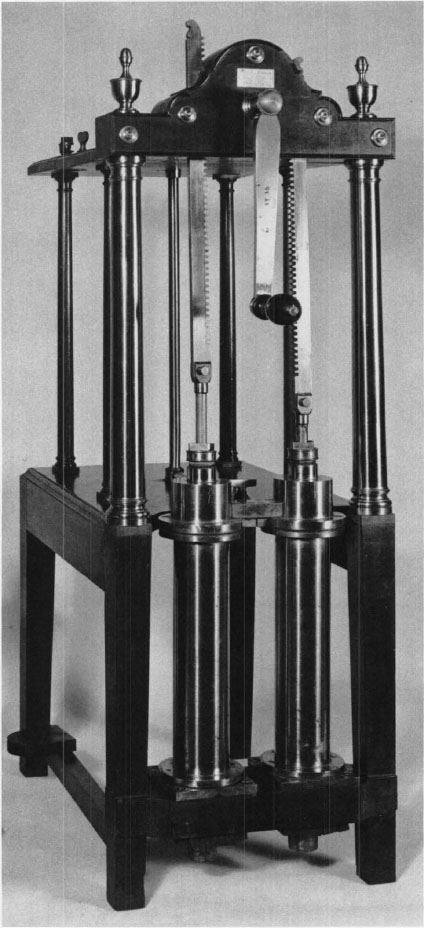
47. The Jones model of Prince’s pump which was sold to Harvard in 1804.
Harvard Collection of Historical Scientific Instruments
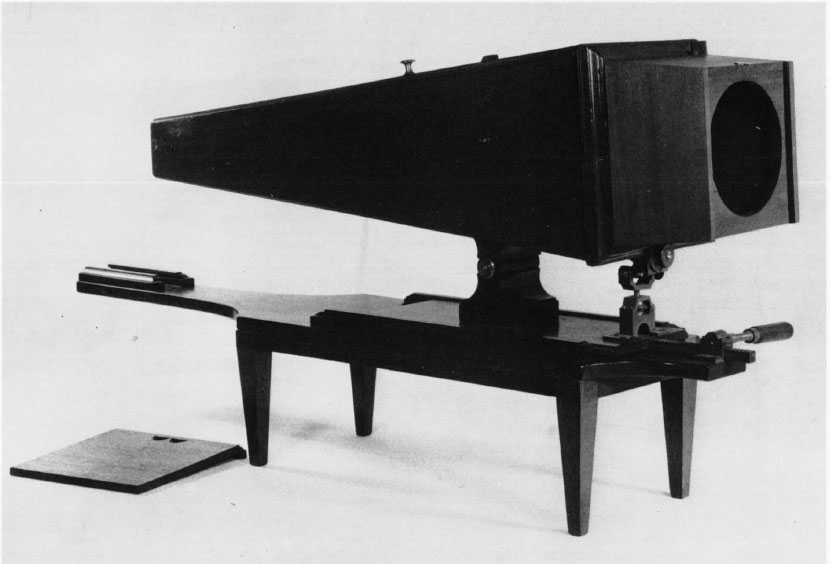
54. The lucernal remounted by Prince for Harvard in 1796.
Harvard Collection of Historical Scientific Instruments
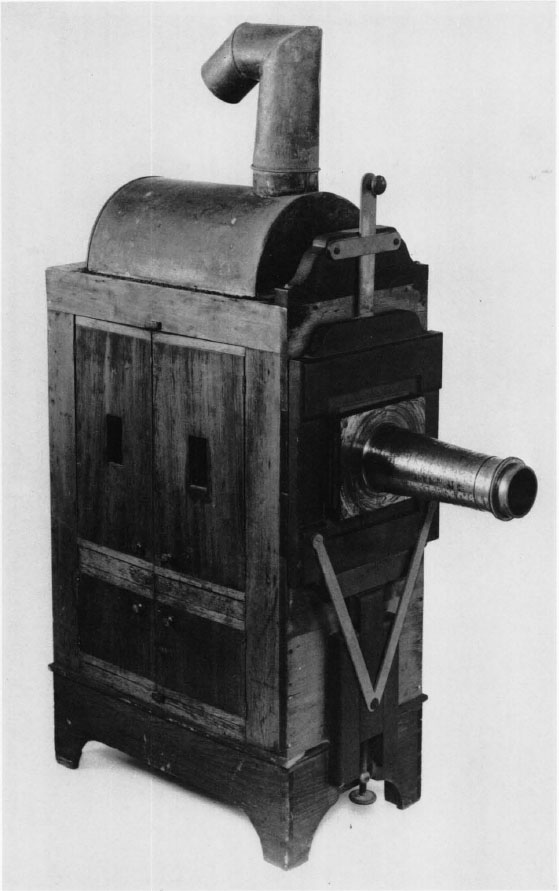
56. Magic lantern which Prince repaired and improved for Harvard.
Harvard Collection of Historical Scientific Instruments
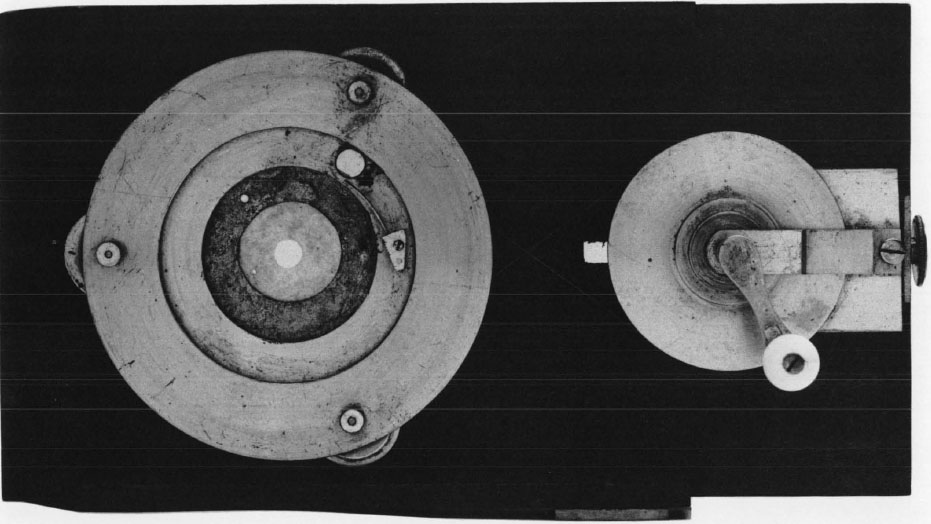
57. Astronomical lantern machinery designed by Prince and sold to Harvard by W. and S. Jones.
Harvard Collection of Historical Scientific Instruments
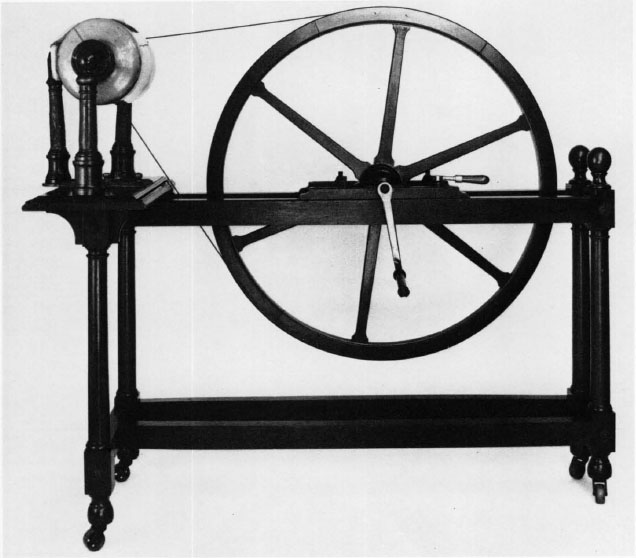
62. Electrostatic machine repaired by Prince for Harvard in 1789.
Harvard Collection of Historical Scientific Instruments
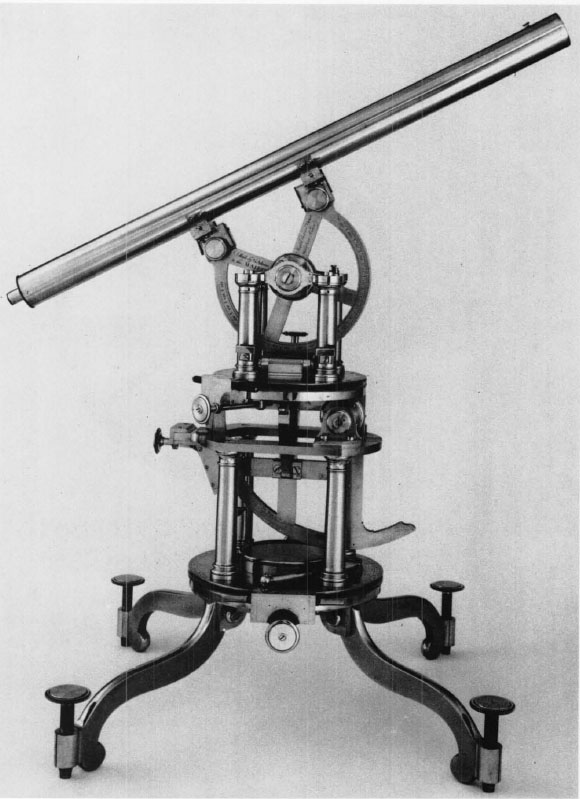
63. Equatorial instrument that Prince sold to Harvard in 1803.
Harvard Collection of Historical Scientific Instruments
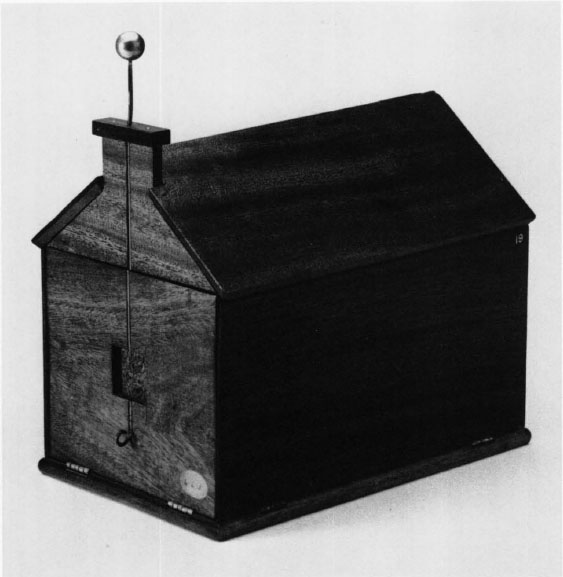
64. Thunder house made by Prince for Harvard in 1789.
Harvard Collection of Historical Scientific Instruments
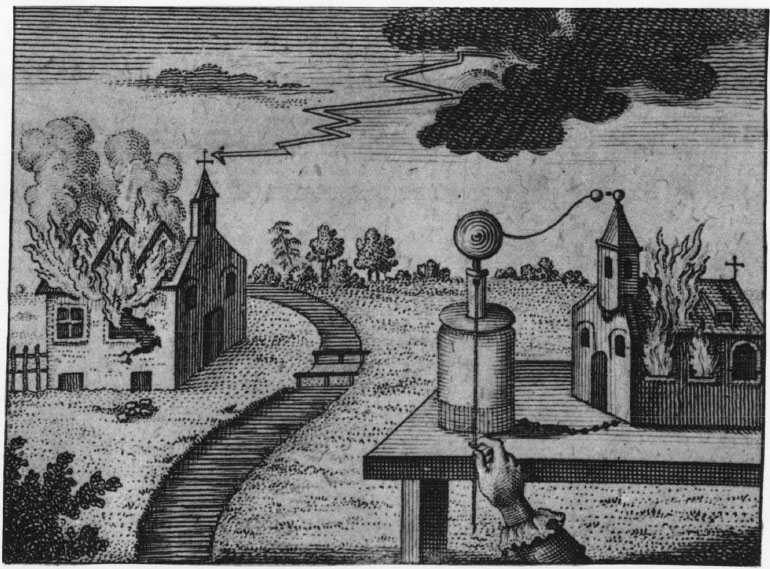
65. Thunder house used to simulate the destruction of a church by lightning.
Beck, Kurzer Entwurf der Lehre von der Elektricität (1787).
Courtesy of David Wheatland
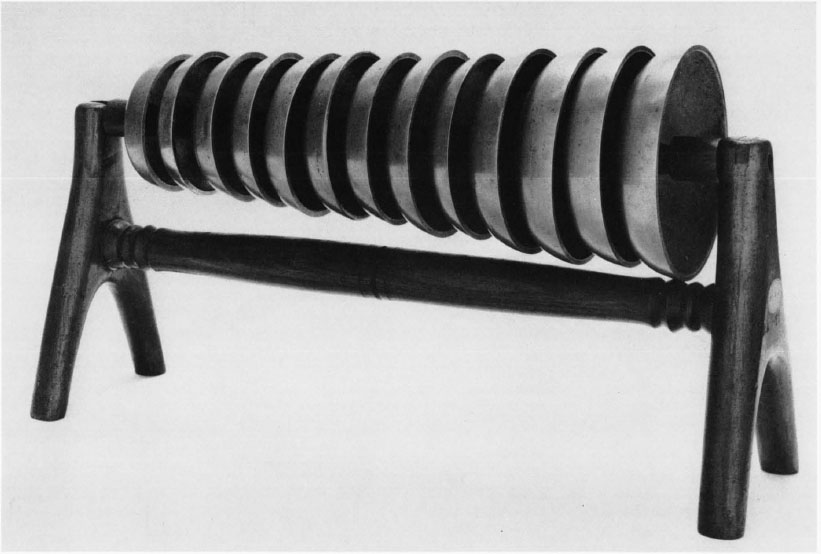
66. Set of bells made by Prince for Harvard in 1799.
Harvard Collection of Historical Scientific Instruments
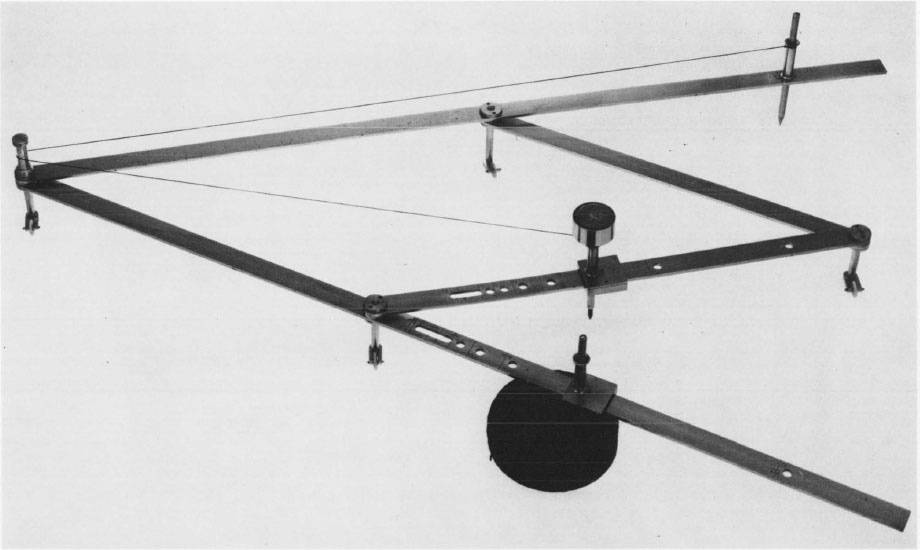
67. Pantograph which Prince sold to Harvard in 1792.
Harvard Collection of Historical Scientific Instruments
Prince, however, did not overlook the role of the support in obtaining a clean image. Instead of reducing the instrument’s vibrations with a multiplicity of props haphazardly applied, he revamped the entire mounting of the telescope and lucernal microscope by setting these instruments on a few firm and thick supports. Moreover, in the microscope, it was the focusing mechanism, which Prince incorporated into his mounting, that first made the lucernal a viable, working tool of science. To these key alterations on the air pump and the mountings of telescopes and microscopes, one can add Prince’s simplification of Brook’s electrometer and the common battery to show that an element of simplicity underlay Prince’s approach in the different fields of natural philosophy.
Prince achieved versatility in his instruments as well as simplicity. Prince’s vacuum pump transformed into a compressor. The lucernal, which was adaptable for opaque and transparent objects, could also be used as a solar microscope or projection lantern. An urn topped off Prince’s megaloscope to make it a handsome piece of furniture. The telescope stand could be used for viewing terrestrial objects as well as celestial ones. Thus, Prince designed his instruments not only to achieve more accurate, efficient results, but also to adapt to a wider scope of uses.
The inventive, creative alterations Prince effected on these instruments earned him the scientific public’s esteem, and as ingenious propositions, each of the innovations was quite unique. Nonetheless, if there is a common denominator to all of John Prince’s singular improvements, it is found in the simplicity and versatility of his solutions to the problems posed by instrument design and utility.
III
The Agent for the Diffusion of Scientific Knowledge in the United States
While colonial Americans did not shun theoretical speculation, many preferred the practical and experimental sciences. In order to master and settle the new continent, the colonist needed certain practical skills—surveying, meteorology, mathematics, medicine, geography, cartography, navigation, and astronomy.3 Since the services of the occasional self-taught surveyor or navigator did not fill the burgeoning demand, colleges educated their students in these practical sciences.4 Thus, utility in science was certainly the colonists’ foremost concern; however, it was not their only interest in the discipline. While few academics pondered the theoretical intricacies of eighteenth-century science, many engaged in the empirical investigation of Newtonian theory.5 As a search for architectonic order in nature, such experimental natural philosophy had little practical value. John Winthrop, for instance, observed sunspots from the Boston Common, calculated the transit of Venus and Mercury, studied a lunar eclipse, and reported his findings to the Royal Society.6 Although these were not theoretical speculations, Winthrop’s observations were still not helpful in surveying the adjacent land, or navigating the inland waterways. The articles in the Memoirs of the American Academy of Arts and Sciences in 1785 further demonstrate the American proclivity toward practical science, but they also point out that scientific activity in the United States was not exclusively utilitarian.
The emphasis of college curricula on both practical and empirical sciences encouraged lecture demonstrations and instruction in the use of scientific equipment. Experiments performed in the classroom were of signal importance in distinguishing scientific instruction from that in the humanities. Outside of natural philosophy all subjects were taught by recitation. Students memorized whole paragraphs from their textbooks and spouted these truths forth into their tutors’ ears. The tutors had no need to ask questions, the students no need to think.7 In startling contrast to this method, vivid lecture demonstrations in natural philosophy graphically displayed a scientific principle in action, and encouraged questions from students. If the demonstration did not work as planned, the students still could inquire why it had not; they could weigh these reasons and ask the professor to assess their solutions or alleviate their confusions. At Harvard, the holder of the Hollis chair of natural philosophy “set apart two or three hours in Every week, to converse with his Pupils & Indeavor to clear such difficulties as lie upon their minds, relating to ye several parts of ye Mathematicks, natural & experimental Phylosophy.”8 These weekly question and answer sessions were considered so important in understanding the physical sciences, that in its 1788 revision of the Regulations of the Hollis Professorship, the Harvard Corporation insisted that the professor frequently inform his pupils of his readiness “to attend to their applications for particular & familiar conversation on and instruction in the subjects of their studies, in the branches of his profession; and shall at all times encourage such applications.”9
During the eighteenth and early nineteenth centuries, professors of natural philosophy considered demonstrations to be the only method of teaching their discipline. Of course it was preferable for experiments performed in lecture to run smoothly if the skeptical student was to be convinced of a scientific truth. As one professor of natural philosophy aptly argued, “The air-pump and the electrical machine require to be in a sound state in order to be of any use whatever. It is not here as in the case of some experiments where you may approximate to success. If the lecturer does not quite succeed he absolutely fails.”1 Successful experiments demanded sound, well-designed instruments; and for the eighteenth-century college, its philosophical apparatus was as valuable an acquisition as its library. When, in 1764, a fire consumed Harvard Hall, which housed the college library and its philosophical apparatus, the loss was deeply felt. The corporation immediately enlisted the aid of Benjamin Franklin to replace the instruments, and in less than fifteen years the new collection surpassed the old.2 In his 1801 directory of American colleges, the Reverend Samuel Miller also agreed that instruments were as fundamental to teaching as books, and he described each institution’s scientific equipment as fully as its library.3 To other academics, such as the Reverend Peres Fobes at Rhode Island College (now Brown), a college instrument collection was even more valuable than a book collection; and these men staked the reputation of their institutions on the quality of their scientific apparatus. It was not the library which lured students from Rhode Island to Massachusetts, Peres Fobes believed.
. . . The popularity of Cambridge College [Harvard], especially on account of its Apparatus, operated as an Insuperable Objection against procuring schollars for providence college, nor cod I devise any other method of removing the objection, but by providing an Apparatus, by which all the experiments in natural Philosophy done at Cambridge cod be exhibited to the schollars of R I College.4
To purchase these fine instruments, Fobes and his colleagues turned to John Prince.
While there were numerable mathematical practitioners in America at this time who were manufacturing the mensural tools of the surveyor and navigator, few people constructed philosophical apparatus.5 In general, most scientific instruments needed to be imported from London. Yet, without anyone in England to select apparatus, there was a risk in purchasing it, and colleges felt uneasy at choosing articles untested and sight unseen from a London catalogue. The time it took to place and receive an order, the breakage of instruments en route, the difficulty in repairing them locally, and the cost of shipping, all had to be carefully considered. As a result, there emerged a demand for an American who could advise schools on what to purchase, who could perhaps fill their orders himself more quickly and cheaply or handle the arrangements in London for them, and who could do any routine repair work. From Maine to Tennessee, colleges, academies, lyceums, and private individuals discovered these talents to be embodied in but a single man, John Prince. The list of schools which sought Prince’s counsel was nearly a catalogue of all American academic institutions existing during his life. The colleges included Harvard, Yale, Brown, Bowdoin, Dartmouth, Rutgers, Williams, Middlebury, Amherst, Vermont, Union, Transylvania, Tusculum, and Charleston. Academies in Philadelphia, New York, Boston, Leicester, Monson, Westfield, Onondago, Byefield, among others, also solicited Prince’s aid. And this extensive list was only surpassed by the collection of instruments Prince provided for each of these schools.
Remembering Prince’s creativity in designing scientific instruments, his outstanding private library, and his participation in a vibrant and challenging scientific community, one cannot doubt that he was highly qualified to advise schools on their libraries and apparatus. The books Prince recommended ranged from Wells’s Geography7 through Grew’s Anatomy of Plants and Nicholson’s Journal of Natural Philosophy, Chemistry and the Arts.8 Electrostatic machines, pneumatics apparatus, microscopes, and telescopes were among the instruments Prince either built or ordered for institutions and individuals.
Prince generously made his instrument-making skills available to the colleges. He could fuse new and old apparatus together in order to modernize an aged instrument or repair a newer piece by drawing upon available parts in his shop.9 While a local artisan or clockmaker could fix some loose screws or gearwork in an orrery, Prince personally undertook intricate and delicate repairs that demanded the expertise of someone familiar with the instruments.
The instruments and invoices surviving today in the archives of these early American colleges are an invaluable source of information on the nature of the instruments Prince sold and the repair work he did. Indeed, they document his craftsmanship in:
- repairing and cleaning ye astronomical quadrant, by mending ye spirit level, making an oblique speculum & mirror to enlighten ye cross hairs, a piece to adjust ye plumb line on ye quad’t, and several screws furnishing it with a plumb level of 12 inch side & silver wire for ye plumb lines.
- mending by 2 screws & soldering ye air pump piston.
- cleaning ye large 5 foot [Short] reflecting telescope.
- [taking] a 20 inch [focus] achromatic perspective & fitting it to ye solar microscope with a black grounded mirror, proper for viewing eclipses in a darkened room.1
- repairing & fitting up a magic lantern with a large hemispherical lamp, tall chimney & wooden box.2
- repairing ye helioscope of ye telescope.
- repairing lead weight instrument for air pump.
- repolishing small speculum for telescope.
- repairing large thermometer.3
By performing these tasks which had formerly been done only by the British instrument makers, Prince helped schools to avoid the long time and prohibitive costs of shipping an instrument to London.
It did not take long for colleges and private individuals to recognize Prince’s talents in providing these services. The earliest record of Prince selling an instrument to a college is dated 21 July 1779, the year he was ordained. On that occasion, the President and Fellows of Harvard College had authorized John Winthrop and Caleb Gannett to purchase a barometer and frame from Prince in exchange for a small tube, three to four feet in length, belonging to the college philosophical apparatus.4 In general, once a college availed itself of Prince’s skills, it was hesitant to relinquish them, and Prince continued to tender his services to American institutions and individuals until his death. In 1832, fifty-four years after his first exchange with Harvard, Prince wanted to improve Harvard’s lucernal and sell the college a new universal dial in return for a solar microscope.5 This was perhaps his last exchange with any college. Prince did, however, continue to sell his wares to individuals at least until November 1835, several months before his death, when he showed R. T. Paine of Yale an improved lucernal.6 Before 1832, the quantity of philosophical apparatus which passed from Prince’s hands to the colleges was extraordinary. For instance, from 1789 to 1806, existing invoices from Brown, Harvard, and the University of Vermont alone indicate that Prince sold or repaired over 250 instruments costing approximately $2,584!7 Nonetheless, this large figure may still be too low an estimate, since most college account books surviving from this period either do not cite the instrument dealers being paid or are yet uncatalogued.8 (Examples of Prince invoices are given in Appendix II.)
Although these figures seem high by the standards of the eighteenth and early nineteenth centuries, Prince kept his prices below those of the London firms whenever possible. In defending the costs on his bills, he described how he assigned his prices:
I have governed myself in ye charging of ye instruments by ye London prices, as near as I could determine; and have charged no more than ye same would have cost there as you may see by consulting Adams catalogue: by which ye freight and other charges are saved to ye college, except in ye boxes of glass &c which you sent for. As some of ye instruments were made by combining new and old apparatus together I could not always follow this rule, but have governed myself by ye others and I am certain ye same apparatus which has passed thro’ my hands could so [?] be procured in Lon[don] for a much larger sum than it has cost ye college in this way; besides ye advantages they have derived from these old apparatus. While I have been employed in this business I have also been inquiring into ye cost of similar instruments that I might not over charge any thro’ ignorance, for I could not always make an estimate by ye time & trouble it cost me. I feel satisfied I have not exaggerated tho’ ye foot of ye account is more than I at first supposed it would be.9
In providing well-built apparatus, extending the life expectancy of an instrument, and saving his customers money, Prince attracted the business of institutions which would otherwise have purchased apparatus directly from London. In this manner, it would seem that he entered into friendly competition with William and Samuel Jones.
W. and S. Jones, however, kept a watchful eye on their rivals and repeatedly warned their customers:
that some young philosophers by some advertisements in occasional publications may induce foreign Scientific Men to believe, that they are equally reputable for the manufacture & supply of Instruments of the most perfect kind & adequate workmanship; but this generally is not the case: there [sic] theoretical & abstract engagements precludes them from the opportunity.1
The London firm took great pleasure in being employed “to furnish all the Philosophical & Chemical Inst[rument]s: wanted”2 by a college, and consequently did not relish competition. When accused by their clientele of charging inordinate prices, W. and S. Jones took great pains to argue that “particularly nice instruments, can only be repaired by our very best, and most competent workmen, artists, who have treble wages of the ordinary sort. They [the repairs] must be well done or not done at all.”3 The Jones brothers ventured to add that a college had no business in sending an “undercover” representative to London to check out the prices of the different instrument makers since
We [W. and S. Jones] by long experience, have the employment of, and the engagement with, the best hands in the differ’t branches; and which cannot be known, or obtained by any Gentleman, coming over or visiting us here: larger prices are generally fixed to such strangers, and very often the best materials not at the same time returned.4
If a representative of an American college wanted proof of their craftsmanship, the Joneses insisted he contact a fellow countryman, John Prince, “who is well acquainted with our house and philosop[hical] matters in this country as to corroborate the truth of this assertion.”5
However odd it initially appears, the Jones brothers clearly did not consider Prince a rival or his own instrument making an encroachment on theirs. Among the reasons for this attitude is the likelihood that they misunderstood how large Prince’s private business really was, even though the Joneses’ business was always much wider than John Prince’s. W. and S. Jones, for instance, claimed that they were the sole supplier of Harvard’s philosophical apparatus in the 1790s,6 yet Prince’s invoices with Harvard record private sales worth over $500.7 Certainly judging from the scope of Prince’s business with institutions, one sees that the Jones brothers unwittingly addressed deaf ears when they pledged: “Of any well executed instruments the College think proper to secure from other hands, that they will not find so much good work for so small a sum of money.”8
Aside from not comprehending the extent of Prince’s growing business in scientific instrument dealing, the Jones brothers had further reasons not to view Prince as a competitor. It was no more part of Prince’s character to partake in cutthroat competition than it was for him to seek publicity and patents for his instrument improvements. A formidably modest man, Prince felt satisfied in knowing that others had access to the best instruments available. It mattered little to him whether or not he received credit for instrument designs or sales, and he merely perceived his activities as a service to the community. Prince’s attitude towards his scientific endeavors is vividly depicted in his relationship with his would-be rivals, W. and S. Jones. For fifty years of his life, Prince freely confided to the Joneses any innovations he developed in his instruments, and he often sent them models to encourage the firm to build these new designs. For example, on 28 October 1823, Prince wrote:
I have sent you, in the same box with the telescope, part of a hydrostatic instrument which I began to make with some others several years ago, and now my health and age will not allow me to finish it. It is a combination of several instruments. I have made three of them for different colleges. It is much approved, and more are wanted. I thought that by sending the parts done, with their description and uses, and some models of the parts to be added, it would give you a better idea of it than a mere description alone.9
This is not the devious letter of a man trying to lure business away from a competitor. Aside from openly sharing his ideas with W. and S. Jones, Prince openly patronized their establishment, and did not hesitate to order apparatus from the firm for an American institution when it was convenient. In fact, Prince conducted so much business with the Jones brothers, that colleges not only kept Prince on their accounts and paid him at regular intervals for his personal work,1 but also secured letters of credit for him in London to facilitate his purchases from the Joneses.2 On other occasions, an institution would have apparatus purchased in London shipped directly to Salem so Prince could use the materials in fixing some instrument.3 On purchases of this type, Prince charged a commission of 10 percent4 to the American customer, but contemporaries, such as Benjamin Silliman, insisted that this trifling amount was barely sufficient to cover the clergyman’s costs, i.e., that John Prince operated without a profit margin.5
Thus, Prince reduced the time and costs involved in purchasing apparatus from England, while his noncompetitive association with W. and S. Jones negated any personal benefit he might have accrued from his labors. This was not poor business sense. Rather, Prince understood that frequent London purchases, coupled with private instrument-making endeavors, would enable him to keep on hand collections of the most useful, more often requested scientific apparatus in order to supply colleges or private individuals on short notice.6 And herein lies the key to the clergyman’s singular activities: to promote science, Prince preferred to fill the customer’s needs instead of his own purse. His reward was not to be riches, but the satisfaction of educating others to appreciate the marvels of the natural world. Whenever possible, Prince would save his clientele money and time without sacrificing quality, by making or repairing apparatus himself. If an order was more readily filled in London, then Prince himself took care of the arrangements for his customers. While these economic conveniences initially attracted academic institutions to Prince’s door, his comprehension of the educational use of every tool of science persuaded institutions to continue their association with him.
Every instrument Prince designed, each repair he undertook was seen by Prince not solely from the vantage point of the craftsman and instrument maker; he also viewed these tasks from the standpoint of the educator assessing how each instrument would enhance a lecture. The Prince recognized that students need to become excited, to have their curiosity aroused, before they will itch to uncover the intrigue of nature’s forces. Colleges knew they could depend on Prince to supply their courses with the most up-to-date, appealing, pedagogically effective apparatus. Consequently, the schools gave Prince a great deal of latitude and allowed Prince, at his own discretion, to provide whatever accessory apparatus he judged appropriate for an instrument. A request by the Harvard College Corporation for Prince “to make an Electrical Machine for the Apparatus with the latest improvements”7 inspired him to repair a Benjamin Martin electrostatic machine (see plates) by “mounting ye great cylinder [in place of the broken globe] & altering ye old frame for it.”8 In addition, Prince decided to rebuild numerous electrical instruments. He shipped the improved accessories with the electrostatic machine ordered by Harvard:
- an electric universal discharger & press
- a thunder house
- a luminous word
- a quadrant electrometer
- a spotted bottle
- fixing a double [Leyden] bottle
- a large brass pin & ball
- an apparatus for analizing [sic] ye Leyden phial
- making additions to an electrophorus
- making horns for ye exhausted conductor
- fitting up 3 single [Leyden] bottles with caps, wires & balls
- an elastic wire [spring] & 3 brass chains
- a great tin conductor 6 feet long & 9 inches diam:r
- making 2 stands to support ye conductor
- a small tin conductor 2½ feet long, 4 inches diam:r
- making a stand to support ye conductor
- making another stand for holding ye jointed rod & balls
- 2 large balls 3 & 4 inches diamr with tubes & point
- a small battery of 9 jars, 5 square feet coated surf [ace]:
- fitting up a large battery of 18 jars coated 18 feet sq[uare]:
- fitting up a battery of 15 jars, 15 square feet
- repairing ye old battery
- a large glass tube 3 feet long 1½ in diamr fitted up for exhaustion
- coating 2 spare [Leyden] jars
- apparatus for making experiments on elect[rica]l attraction
- a small phial to hang on ye conductor & in vacuo
- a discharging rod with a glass handle
- a Brooks electrometer for shewing ye charge of a battery in grain weights, a
- double instrument [a balance?]
- Bennetts gold-leaf electrometer
- repairing ye luminous discharger
- repairing a double [Leyden] bottle & a single one
- a large electrical plate 16 inches by 14 framed & glassed for drawing figures on with electricity
- a set of spiral tubes [an electrostatic device—tin foil in a glass tube]
- altering ye cushion of ye other great [electrostatic] machine.9
In compiling this order, Prince never lost sight of the students, and he assured Harvard that the electrical apparatus was “compleat according to your request for ye necessary experiments, in this branch of science; for instruction and entertainment, ye latter of which I have in some degree attended to, as to catch ye attention of youth is ye ready way to instruct them.”1
While academic institutions knew they could count on Prince’s sound judgement in selecting the necessary equipment to teach natural philosophy, they often did not need to ask for his help. Frequently, Prince sought out each school and offered his unsolicited advice. Perhaps the estate of some deceased gentleman had fallen into Prince’s hands, and he was willing to part with the instruments at a considerable discount. On one such occasion he offered the University of Vermont an air pump and its connecting apparatus, costing $227, at a $30 discount.2 At another time, he sold to Harvard two equatorially mounted telescopes in exchange for $200 and an old air pump, which he later renovated for Dartmouth.3 In encouraging the Harvard Corporation to purchase the equatorial, Prince argued with President Joseph Willard:
I offer this instrument to ye Gentleman of ye corporation of Harvard College as it is, with both its telescopes, for ye moderate price. . . . And perhaps they never will have so good an opportunity of purchasing so valuable an instrument of this kind so cheap—As ye equatorial is ye only instrument, which describes ye path of ye heavenly bodies, it is very useful for instruction in astronomy, and is perhaps ye best for illustrating ye principles of dialling—I am desirous of see[in]g: it placed in ye apparatus of ye university, as such capital instruments give importance to it abroad.4
As an authority on instruments, Prince also advised colleges to which he was not selling instruments. In 1802, the trustees of Bowdoin College appointed the Reverends Thomas Barnard, William Bentley, and John Prince to receive donations for the school’s philosophical apparatus and library.5 The Harvard College President and Fellows appointed Prince to serve with Nathaniel Bowditch and John Farrar on a committee to consider purchasing a large telescope, planetarium, and plate electric machine from W. and S. Jones in 1826,6 and this same committee also assessed the Joneses’ bill for remounting a Short telescope.7 Prince further demonstrated his interest in education at Harvard when he attended overseers meetings in 1824 and 1825.8 Providence received her share of Prince’s attention in 1794 when the American Academy of Arts and Sciences appointed him to participate on a visiting committee with Samuel Webber, Loammi Baldwin, Manasseh Cutler, and General David Cobb, to inspect the philosophical apparatus of Rhode Island College.9
The relationship of these advisory functions to Prince’s instrument repairing and dealing indicates how scientific information was diffused in the United States during the eighteenth and early nineteenth centuries. By selling and repairing scientific instruments in addition to his advisory role, Prince was a source of continuity in colleges when new professors succeeded former instructors of natural philosophy. In the eighteenth century, academic institutions usually had only one professor of natural philosophy, and it was not until he retired or died that the college would seek a replacement. Frequently the new instructor was unprepared for the job and unfamiliar with some of the subject matter and tools of science.1 In such cases, the fledging professor found it comforting to have his predecessor’s advisor at his side. John Prince’s longevity and undiminished acuity enabled him to fill this advisory role, and in their first years, many professors, such as Harvard’s Samuel Webber, turned to Prince to procure apparatus from London.2 Prince became equally known as an advisor on apparatus and as a seller of scientific instruments. Other colleges looked to Harvard for guidance in teaching natural philosophy, and prided themselves on their apparatus’s earning the approbation of Boston’s American Academy of Arts and Sciences. Indeed, Rhode Island College was particularly pleased when several Bostonians expressed a desire to buy the school’s orrery for Harvard.3 If a college asked a Boston natural philosopher to recommend an advisor, distributor, and repairer of instruments, it would hear John Prince’s name repeated. As existing sales documents indicate, those who left the Boston area also remembered Prince’s excellent work and kept in touch with him. Thus, Prince began to sell apparatus to the University of Vermont shortly after Samuel Williams had resigned his Harvard post and had started to teach natural philosophy there.4 On the other hand, the clergyman’s active membership in the country’s learned societies and his friendship with the scientific men of Salem formed a larger web of liaisons with the academic institutions in this country. These connections explain the geographic scope of Prince’s business in distributing instruments.
To summarize, Prince answered the academic demand for instructional and educational scientific instruments in several arenas. He was more than a dealer in unusual apparatus who sold his stock at a discount, more than a local middleman between American colleges and London firms. Prince was an instrument maker in his own right, a craftsman capable of fine repairs and novel improvements. Scientific instruments dovetailed with contemporary teaching methods, and Prince intimately understood this relationship. His sound practical advice was widely sought by American colleges, many struggling in their infancy to attract and train students. Prince earned the esteem of American natural philosophers, and his business in distributing scientific instruments blossomed. With the far-reaching connections he established, Prince—the instrument maker and dealer, the London agent and advisor—was able to exert considerable influence on the growth of scientific knowledge in the United States.
IV
Concluding Remarks on the Importance of John Prince in the History of American Science
This examination has attempted to address several primary concerns. By way of conclusion it would be appropriate to state these concerns as explicit questions, and to offer some plausible answers based on the evidence here presented. Was John Prince merely a gadgeteer or did he possess a deeper understanding of scientific theory? And to what extent were his pursuits unique among the activities of American natural philosophers in the eighteenth and early nineteenth centuries?
It is well documented that Prince designed and built many practical scientific instruments for use in experimentation, lecture demonstrations, and parlor entertainment. Prince’s only published papers appeared in the Memoirs of the American Academy of Arts and Sciences and detailed his improvements on the air pump and telescope stand. John Hill and Thomas Dobson printed articles describing Prince’s design of the lucernal microscope. Personal correspondence between Prince and his contemporaries reveals his alterations of electrical machines, some solar microscopes, artificial volcanoes, and other instruments.
Prince excelled in these activities and received considerable acclaim for his work in scientific circles. Yet, the fact that Prince enjoyed a lustrous reputation is by itself insufficient to show that he was more than a tinker. Before calling Prince a tinker, one must first define the term. According to the Oxford English Dictionary, a tinker is an unskilled gadgeteer who enjoys mending and experimenting with machines, yet too often bungles a repair through clumsiness. Rarely reasoning from, and seldom displaying an interest in, scientific theory, the tinker prefers to work intuitively, by trial and error. By this definition, Prince was surely no gadgeteer, no tinker.
Indeed, the resourceful clergyman was a fountain of innovative ideas; his improvements were too numerous, and too skillful, to be considered merely lucky accidents of tinkering. Moreover, Prince seems to be conscious of the theoretical dimension of his craft. To design apparatus with consistent success, an instrument maker cannot completely exclude theory from his work. He must understand a modicum of current theory in order to know what quantity an instrument is supposed to measure and to what degree that quantity is capable of being measured precisely. In the realm of pneumatics, for instance, an instrument maker attempting to construct a better air pump must first ask whether a pump by itself can ever create a vacuum, and even whether a vacuum truly exists in nature. By answering these questions, the craftsman has a more realistic idea of how his technological skills might be used to improve the instrument or challenge the accepted theory of the time. These were the questions which Prince effectively asked himself on the air pump, and he frankly admitted to Joseph Willard in 1785, “This, Sir, is reasoning from theory: but these circumstances, I think, ought to be considered in the construction of an air-pump; and experiment only must determine how far an attention to them may be useful.”5
This proof that Prince paid some attention to theory would be valid even if he were not a religious man. Yet, as a cleric, Prince had further incentive to consider theory. The Protestant religion of the eighteenth and early nineteenth centuries fostered an interest in theoretical speculation since knowledge of the natural world’s design brought the believer closer to the Designer. Professors of natural philosophy, whether or not ordained by the church, imparted this “argument from design” to their students. In the 1820s John Farrar at Harvard delivered a series of lectures
in which he exhibited, in its various aspects, the idea that in mathematical science, and in that alone, man sees things as God sees them,—handles the very scale and compasses with which the Creator planned and built the universe; another [lecture] in which he represented the law of gravitation as coincident with, and demonstrative of, the divine omnipresence.6
The Reverend Samuel Williams, a predecessor of Farrar and the minister who ordained Prince, had asserted that God had designed natural laws to capture people’s attention and cause them to admire God’s handiwork. Williams instructed his students that:
The general course, productions, and laws of nature, should be carefully and steadily attended to: and when new phenomena appear, all the circumstances and effects, relating to them, should be particularly noted and collected. . . .
From contemplating these mighty works of nature, a philosophic mind will naturally rise in admiration and reverance, to the FIRST GREAT CAUSE OF ALL! In all the works of nature, we find plain marks of that wisdom, power and goodness, with which the whole plan, frame and constitution of it, was first formed and adjusted. As all natural effects take place in consequence of causes and laws derived at first from GOD, true philosophy agrees with the holy scriptures, in ascribing all such events to his agency. It was no doubt with a view ultimately to moral purposes, that the laws of nature were first established, and nothing can be better adapted than many of their operations, to awaken and direct the attention of mankind to the supreme Governor of the world.7
John Prince was in full accord with Farrar and Williams on this issue. Although Prince reserved his religious idioms for his sermons and avoided theological speculation in his scientific writings, a colleague of his observed, “He never explored the glorious mysteries and glittering recesses of nature, without discerning and causing all others to discern and adore, traces of the power and wisdom of its author. Wherever he walked with science there he walked with God.”8 Therefore, whether Prince was a scientifically minded theologian or an atheistic instrument maker, he would have found some theoretical knowledge a critical requirement of his vocation. He would have been equally unsuccessful as an instrument maker and as a clergyman if he only tinkered with the apparatus in his shop or with the souls in his church.
Prince’s other activities also bear out the fact that he was not strictly a gadgeteer. A tinker rarely knows the reasons why something works, and Prince, if merely a gadgeteer, would have been in no position to provide sound, reliable advice on apparatus regularly to colleges. Furthermore, in his personal correspondence, he demonstrated a firm grasp of theory and often referred to scientific texts he had read.9 He also constructed instruments for his personal use in performing philosophical experiments.1 Prince displayed an avid interest in nonexperimental sciences as well. When Benjamin Silliman delivered a series of geological lectures in Salem in May 1835, the eighty-four-year-old Prince was present and attentive. Although Prince knew something about minerals and volcanoes, geology was a relatively new science to him. And studying the earth’s structure was like an experiment. Prince became deeply engrossed in the subject. He examined drawings and samples while attending Silliman’s demonstrations; but he was not satisfied in the lecture room. With Silliman as a guide, Prince organized a geological excursion to see the Saugus jasper and the dikes from Nahant to Marblehead. One dike on the beach between Lynn and Salem excited Prince to clamber onto the rock to examine it more closely. Indeed the eighty-four-year-old clergyman completed this twenty-mile circuit with enthusiasm and energy to match even the youngest member of the party.2
Clearly, this extraordinary individual, who climbed on Massachusetts rocks to learn geological truth first hand, was not simply a tinker or gadgeteer; he had too deep-rooted an interest in theory, too much success as an improver of instruments. This is not to say, however, that Prince had the acumen of a theoretician or the understanding of the best natural philosophers. The breadth or depth of his theoretical comprehension need not have been that great, but some familiarity with theory was essential for him to carry out his diverse projects with repeated success. This placed him above the level of tinker to be an instrument maker and dealer, an advisor to colleges, and a clergyman in the fullest range of these occupations. Nevertheless, there remains the question of how unique John Prince was in this combination of professions.
From the 1600s to the early 1800s, instrument making in America was not a distinct craft. In general, joiners, cabinetmakers, tinsmiths, silversmiths, pewterers, brass founders, ironmongers, engravers, and clockmakers continued to ply their respective trades in the major shipping centers, and they repaired instruments as needs arose in the community. As demands for surveying and nautical apparatus increased, these artisans began to specialize. Those with woodworking skills handled most navigational instruments, while the metal workers saw to the needs of the cartographer, surveyor, and astronomer.3 Oddly, a surprising proportion of surveying and nautical instruments was produced by clock makers.4
Mapping out the new continent required the tools of the surveyor, navigator, and cartographer. Since apparatus to teach natural philosophy was not demanded in the same tremendous quantities, one would not expect to find many Americans producing these items. However, not even a small volume of requests was filled in this country, and most philosophical instruments had to be imported from England. Only 10 percent of the instrument makers in America during the eighteenth century built any scientific instruments, these being limited to an occasional telescope, orrery, globe, or astronomical clock for the maker’s personal use. Except for two Italian immigrants in New York who sold barometers, thermometers, and hygrometers in the 1790s, most of these artisans were in business to sell clocks or surveying tools, rather than scientific apparatus for college use.5 The celebrated David Rittenhouse built his orrery in order to advance his scientific status in America and abroad. It was only after he had published the details of his instrument that several colleges asked him to build orreries for them. Despite these persistent requests, Rittenhouse decided to build no more than two orreries.6 Modest John Prince, however, never dreamed of redesigning the air pump in order to secure the acclaim of natural philosophers, and Joseph Willard had to convince Prince to allow the publication of an account of the instrument. When colleges and private individuals began to ask for air pumps, Prince readily furnished them, and continued to do so throughout his life. As late as 1821, he wrote that he sold three pumps that year and had orders pending from Harvard and Bowdoin.7 As for repairing philosophical apparatus, Prince himself commented on the inadequate local skills available to mount a glass cylinder on an electrostatic machine:
I have mounted cylinders formerly, but have none[?]—There is some risk in mounting them and that risk had better be taken in London—I know of no one here that could do it besides myself—I do not think ye Boston cylinders excite well—The glass is too thick—8
Although Prince traded neither in quadrants nor surveyors’ compasses, he seemed to be the only American producing, selling, and repairing pneumatic and electrostatic apparatus, lucernal and solar microscopes, and other scientific instruments. Therefore, his large-scale business of providing philosophical apparatus to colleges was clearly unique.
Perhaps it was due to his education that Prince found himself in so singular an American trade. Since most early American instrument makers were native born, they rarely underwent any specialized training comparable to that of the British guild system. Most makers of mathematical instruments were self-taught; they learned to rely on published reference works and copies of European instruments to instruct themselves.9 While a four- to five-year apprenticeship was standard in the general metalworking crafts, it was rarely available for the specialized skills of instrument making.1 Men like David Rittenhouse and Andrew Ellicott did offer apprenticeships in making clocks and surveying instruments,2 but they were the exceptions. Most American artisans found it more expedient to hire shop assistants instead of formal apprentices. For these craftsmen, instrument making was but a part-time endeavor, and it made little sense to train apprentices who often went into other trades after having served their indentures.3 Thus, Prince was not unusual in teaching himself to apply the skills he learned as a tinsmith and pewterer’s apprentice to the task of making instruments.
It was uncommon, however, for a tinsmith to go to college, and equally irregular for a college graduate to make and sell instruments. This connection may be the key to why Prince built philosophical apparatus rather than practical, mensural tools. When Yale’s President Thomas Clap wrote Cromwell Mortimer, secretary to the Royal Society, Clap complained that the “Infant College” owned little apparatus. Even the barometric tube was broken and there was no man in the colonies able to repair it, he lamented.4 In his request for new instruments, Clap intimated the problem which beset colleges throughout the eighteenth century. An artisan could be called upon to tinker with a piece of equipment to fix it, but he seldom had the scientific background to comprehend its purpose and necessary design. On the other hand, an academic, such as Clap, did not have the mechanical know-how to build a scientific instrument. John Prince had both. By sharpening his intellectual and manual dexterity, Prince’s education enabled and encouraged him to produce a very special breed of instrument, i.e., philosophical apparatus.
Therefore, John Prince was a unique and important figure in the history of American science. His circle of friends included some of the keenest scientific minds this country could offer. As an instrument maker, he overcame the handicap of isolation from the London community, and his innovative improvements rivaled any made in England. In distributing instruments, books, and advice to nearly every college in the United States, Prince wielded impressive influence in the diffusion of scientific knowledge throughout the country. These were occupations sufficient to keep any one man busy, but John Prince also held a full-time position as a clergyman. Yet, in light of the tuberculosis and double hernia he endured for most of his life, and the painful prostatism in his last twelve years, one can only marvel at the stamina and perseverance of this man. A colleague of Prince once reflected that
[Prince] was a very remarkable instance of the favorable condition of society in this country, which permits and encourages those who have a zeal for knowledge and improvement to raise themselves from the common walks of life to eminence and distinction.5
Prince did indeed raise himself above numerous obstacles—physical, geographical, and educational—to achieve eminence and distinction. Yet despite the enthusiastic acclaim of his contemporaries, the clergyman’s humility remained his distinguishing feature. He perceived his religious and secular endeavors as united in bringing mankind closer to a happier, more peaceful way of life. One remarkable statement crystallizes this view:
Oh, when will the time come when men will have no greater ambition than to improve the dignity and happiness of human nature, when the weapons of war shall perish or be changed for those of agriculture and science? How often have I wished I had power to turn all hearts to the rules of Christianity, and correct every passion and sentiment which does not accord with it. Then I would next turn every ship of war into a telescope of equal magnitude and power, and send its commander on a cruise to make discoveries in the ocean of the universe. But, stop! we must not anticipate the order and method of Providence, who, in his time, will, I doubt not, produce this revolution in favor of human nature.6
John Prince may not have been a scientist of the stature of Newton, Harvey, Euler, Linnaeus, Lavoisier, or Laplace. Perhaps with the exception of Franklin, America did not produce anyone of this caliber until well into the nineteenth century. But science is a drama acted out not only by its leading characters. There is a supporting cast of people whose combined efforts have a significant impact on scientific developments. The history of early American science is not a tale of eminent discoverers, but a story of the gradual spread of ideas, and of the teaching and application of science. As individuals, most instrument makers and practitioners did not leave a permanent imprint on American science by any spectacular achievement. Yet, without their skills and contributions, science in this country would have accomplished far less. For their collective influence, these artisans and practitioners deserve to be remembered. This is especially true of the Reverend Dr. John Prince, whose fine philosophical apparatus and valuable advice significantly contributed to early American scientific training, research, and intellectual development.
APPENDIX I
A Catalogue of the Salem Philosophical Library
During the American Revolution, Hugh Hill, a Beverly privateer, captured the vessel conveying Dr. Richard Kirwan’s private library across the English Channel. In 1781 this philosophical library was sold to several scientifically inclined men, including John Prince, Joseph Willard, Edward Augustus Holyoke, Thomas Barnard, and Manasseh Cutler. They highly prized the library which contained a selection of Continental works seldom found in the United States, and they established a philosophical library association which entitled its members to circulate the books among themselves. The library was first housed by Joseph Willard. When John Prince became the collection’s librarian in 1782, the books were moved to his home, where they remained until 1810 when they became the core of the Salem Athenaeum. Today these books are still in the Athenaeum, and the Philosophical Library Record Book and the Catalogue and Charge Book, which Prince kept, are currently in the Essex Institute.
The books contained in this valuable collection are listed below as they appear in the Record Book and in the Catalogue and Charge Book of the library.
Folios
- R. Boyle’s Works, vols. 1–5 (complete)
- Harris’s Lexicon Technicum, vols. 1–2
Quartos
- Philosophical Transactions Abridged
- vols. 1–3, abridged by J. Lowthorp to the end of 1700.
- vols. 4 (missing)–5, abridged by V. Jones to 1720.
- vols. 6–7, abridged by J. Eames and J. Martyn from 1719 to 1733.
- vols. 8–11 (missing), abridged by J. Martyn to 1750.
- Philosophical Transactions at Large
- vols. 47–64, 1752–1774.
- vols. 65–97, 1775–1807, added later.
- Mémoires de l’Académie Royale des Sciences Depuis 1666 jusqu’à 1699, tomes 1, 2, 3 (3 parts), 4, 5, 6, 7 (2 parts), 8, 9, 10, 11.
- Histoire de l’Academie Royale des Sciences, 1699–1761
- Suite de Histoire: pour l’année 1718, 1725
- Miscellanea Berolinensia, tomes 2–7, and Continuatio Tomi for tome 7
- Ames’s Art of Printing, vol. 1
- Buffon’s Histoire Naturelle, vols. 1–15
- Johannis Bernoulli Opera, vols. 1–4
- Jacobi Bernoulli Opera, vols. 1–2
- C. Wolfii Elementa Matheseos, vols. 1–5
- I. Newtoni Principia, vols. 1–4
- Traité des Sections Coniques
- MacLaurin’s Fluxions, vols. 1–2
- Smith’s Optics
- Priestley’s Optics
- Franklin on Electricity
|
|
- Arbuthnott s Tables of Ancient Measures &c.
- Memoirs of ye American Academy
- Transactions of ye American Philosophical Society, vols. 1–4
- Index to ye Philosophical Transactions
- Mahon’s Principles of Electricity
- Sprat’s History of the Royal Society
- Philosophical Transactions Abridged, additional vol. 2.
- Transactions of the American Philosophical Society, vols. 3–6
- Encyclopedia Britanica, vols. 1–18
- Appendix to Encyclopedia Britanica, vols. 1–3.
- Costard’s History of Astronomy
- Transactions of the Royal Society of Edinburgh, vols. 1–5
- Fabricii Bibliotheca Graeca, 14 vols.
- Pennant’s Artie Zoology, vols. 1–3
- Taylor’s Proclus, 2 vols.
Later Additions to Quartos
- Philosophical Transactions, vols. 91–98, 1801–1808
Octavos
- Leadbetter’s Astronomy, vols. 1–2
- Newton’s Arithmetic
- Keil’s Astronomical Lectures
- Keil’s Introduction to Philosophy
- Stewart’s Tracts
- Rohault’s Physics
- Maupertuis’ Figure of ye Earth
- Goldsmith’s Philosophy, 2 vols.
- Priestley on Electricity, 2 vols.
- Priestley’s Philosophical Experiments, 2 vols.
|
|
- Spallanzini Dissertationes, 2 vols.
- Sir John Pringle’s Discourses to ye Royal Society
- Jefferson’s Notes on Virginia
- Inginhouz Experiments on Vegetables
- Darwin’s Botanic Garden
- Pennant’s British Zoology, 4 vols.
- Spallanzini’s Tracts
- Newton’s Optics
- Kirwan on Climates
- Repertory of Arts and Manufactures, vols. 1–16, and new series, vols. 1–13
- Tilloch’s Philosophical Magazine, vols. 1–32
APPENDIX II
Scientific Instruments Repaired or Sold by John Prince
Surviving in the archives of early American colleges, there are corporation and faculty records, invoices, and letters, which chronicle the development of John Prince’s scientific instrument making and attest to the variety of instruments he sold. Yet, these documents are more than a valuable index of Prince’s scientific endeavor; taken together, they also indicate what scientific material was taught in American colleges or studied privately at the time. For this reason, a chronological listing is given below of the instruments Prince sold to or repaired for schools or individuals.
This list is as complete as could be compiled based on a thorough search of the contents of the Harvard University Archives. I have obtained additional valuable information from other colleges; however, a thorough search of their archives was impossible within the limitations of this project.
In preparing this list, I have tried to keep the original spelling of words, but have taken the liberty to substitute the appropriate words for “ditto” and “do.” In cases where the purchase records of a given college are found in only one depository, that depository is cited only once.
Harvard College
APPENDIX III
Surviving Prince Instruments
A fair number of the instruments which John Prince built, repaired, or sold can still be seen in various collections of historical scientific instruments. Below is a list of instruments which have been attributed to Prince, but there are probably many more surviving instruments that should be attributed to him. It is with the help of invoices, such as those listed in Appendix II, that anonymous apparatus can soon be properly assigned to its original maker.
Following each instrument listed is the word “sold,” “built,” or “repaired” to designate the connection Prince had with that item.
Harvard Collection of Historical Scientific Instruments
- James Short telescope (repaired)
- Nairne telescope (repaired)
- equatorial mounting for two telescopes (sold)
- Sisson atronomical quadrant (repaired)
- pantograph (sold and perhaps made)
- double barreled vacuum pump (designed by Prince, sold by W. and S. Jones)
- magic lantern (repaired and improved)
- astronomical lantern sliders (designed by Prince, sold by W. and S. Jones)
- set of 13 bells (made and sold)
- Two Benjamin Martin electrostatic machines (repaired)
- thunder house (made and sold)
- lucernal microscope (designed and repaired)
Museum of History and Technology, Smithsonian Institution
- air pump (designed by Prince and built by him in 1783, sold to Bowdoin College shortly before 1803)
Collection of Historical Scientific Apparatus, Dartmouth College
- Bywater style Nairne electrostatic machine (sold and perhaps built) several Leyden jars (built and sold)

